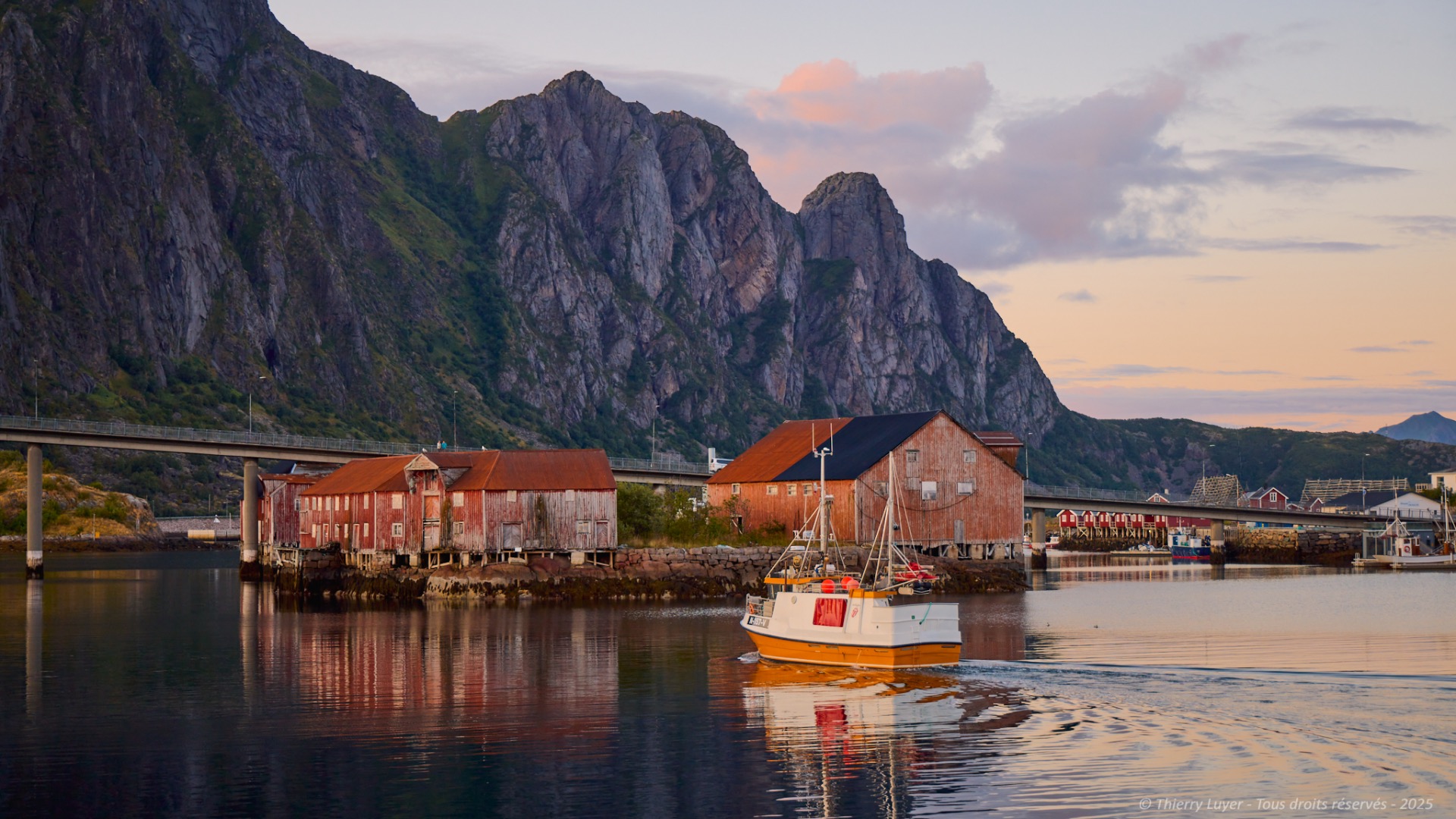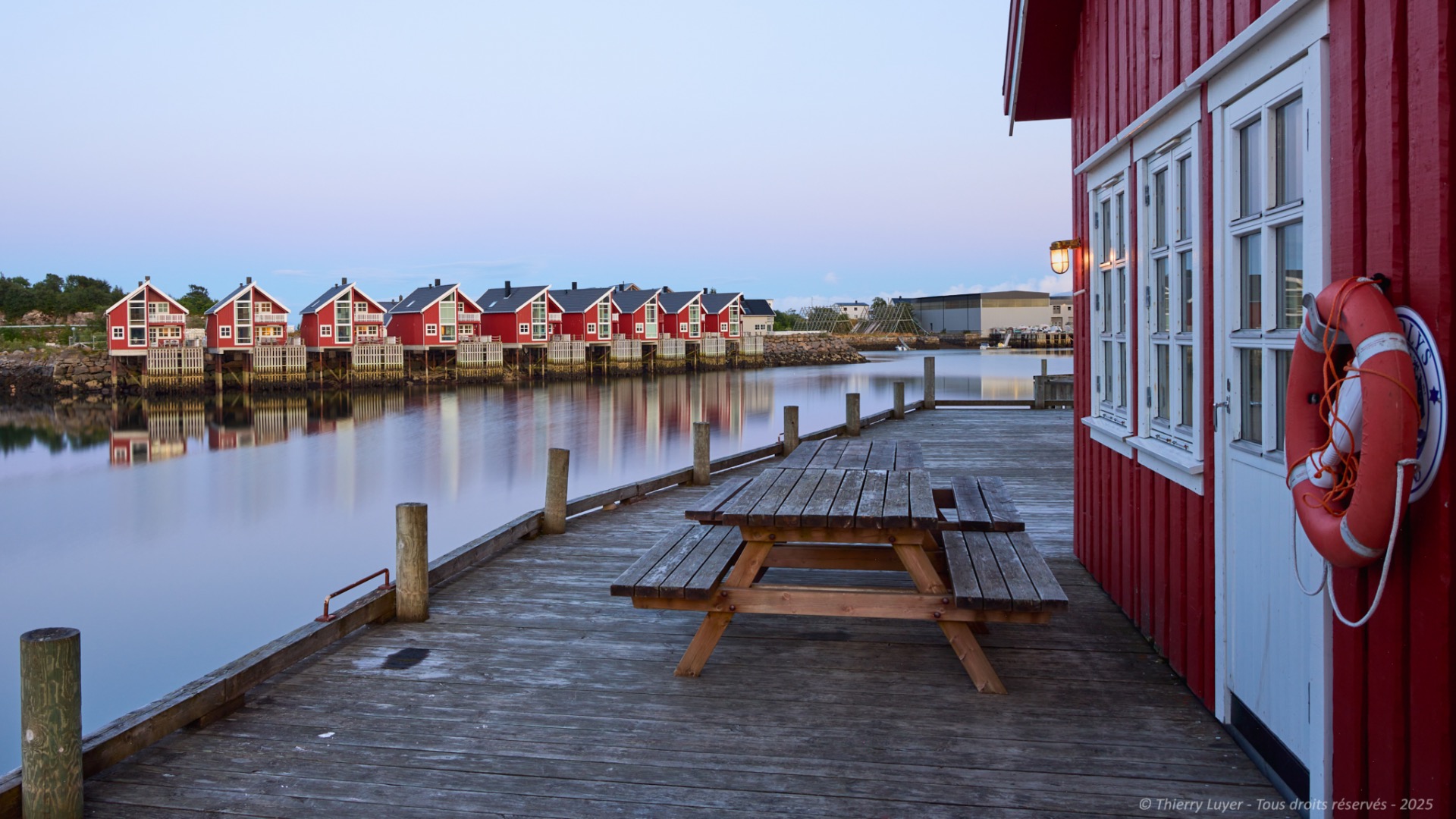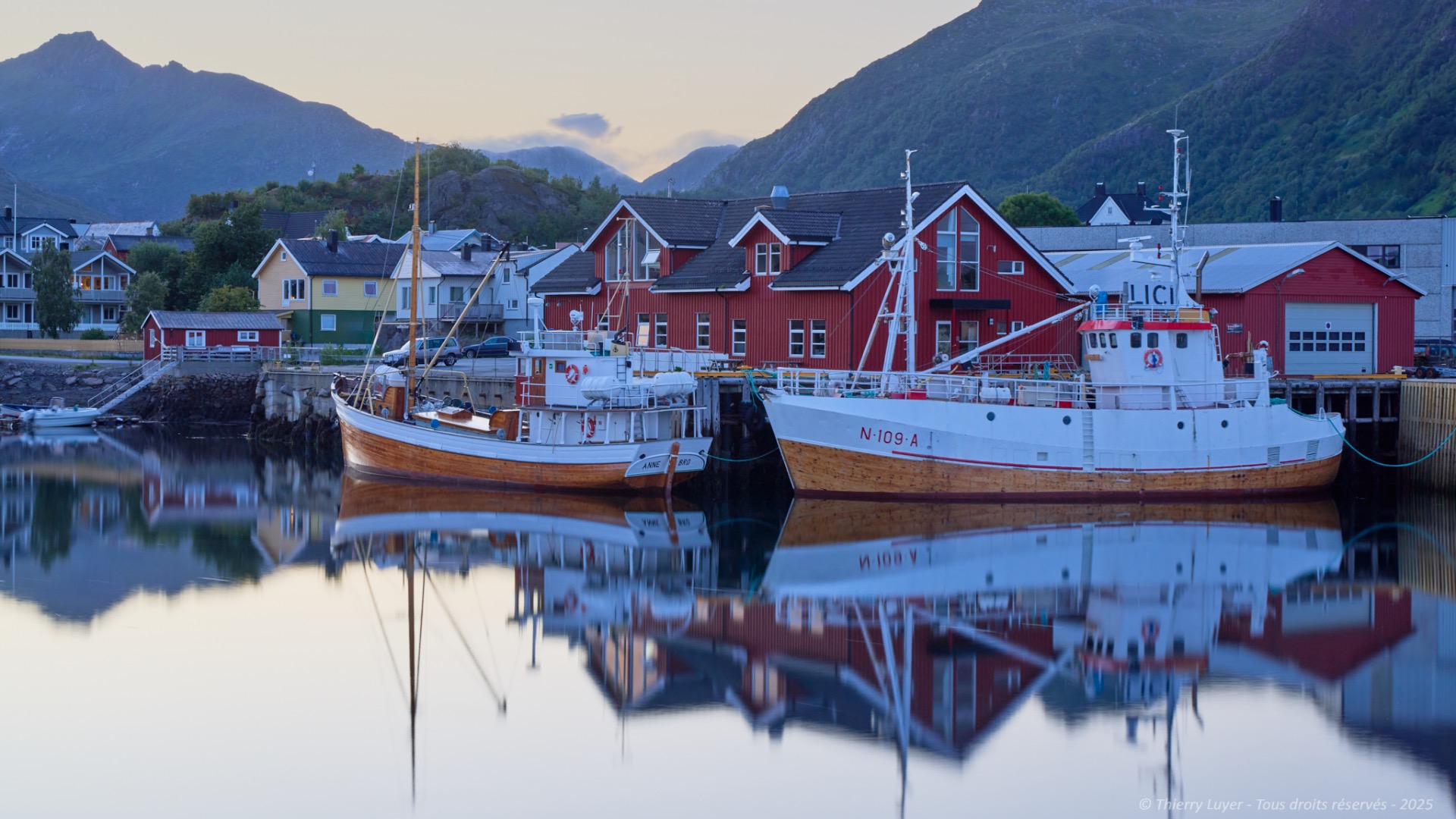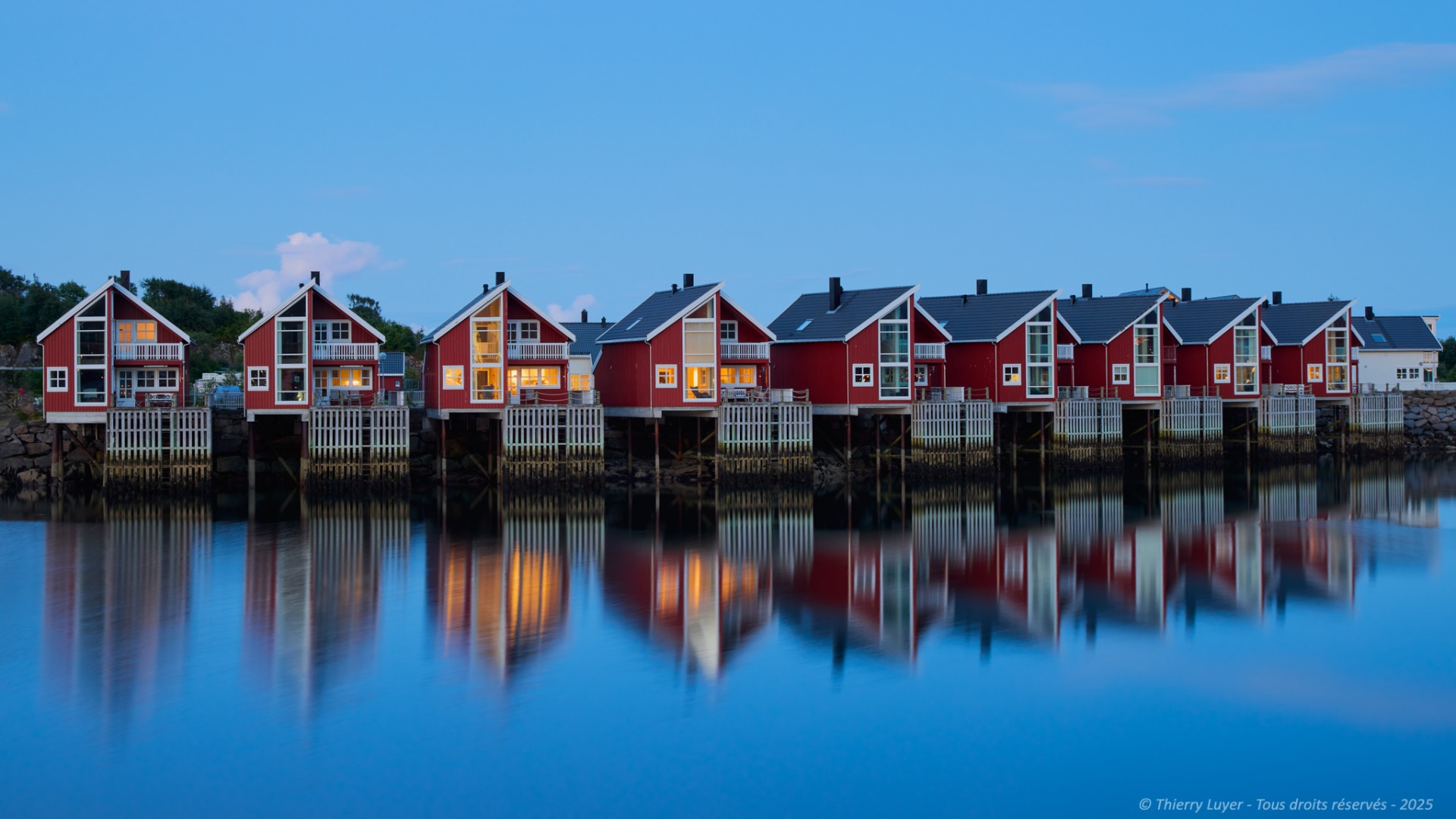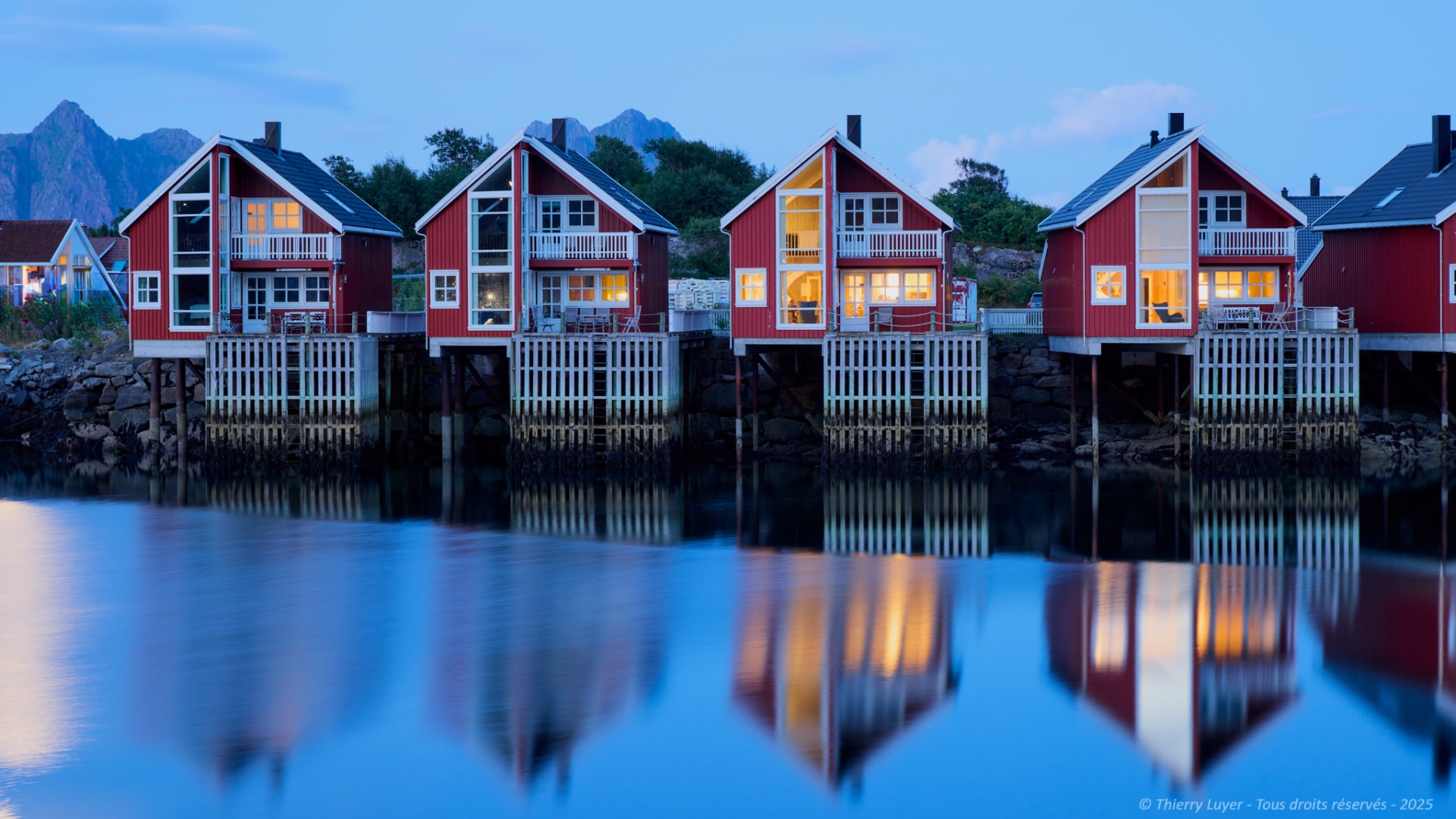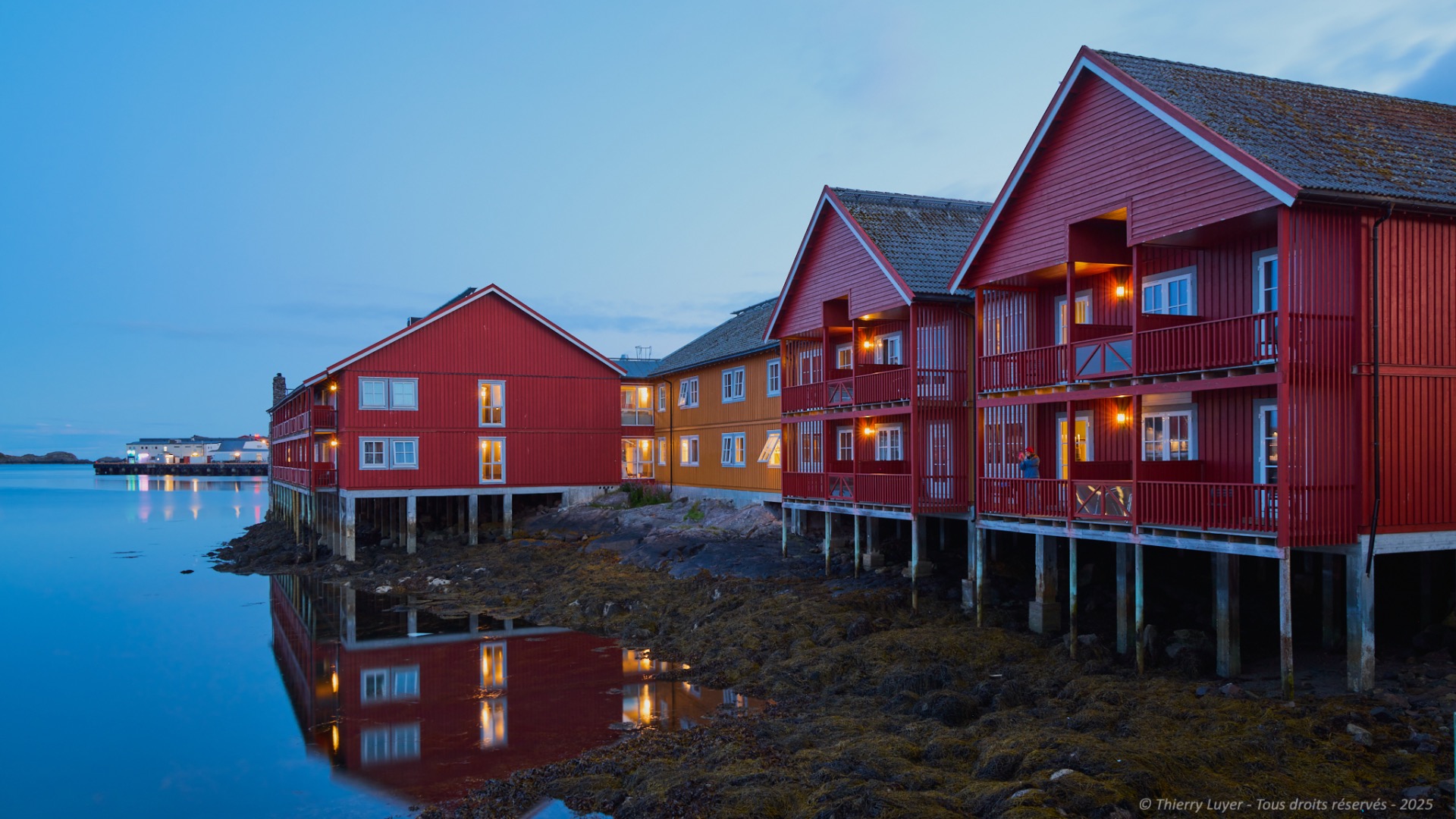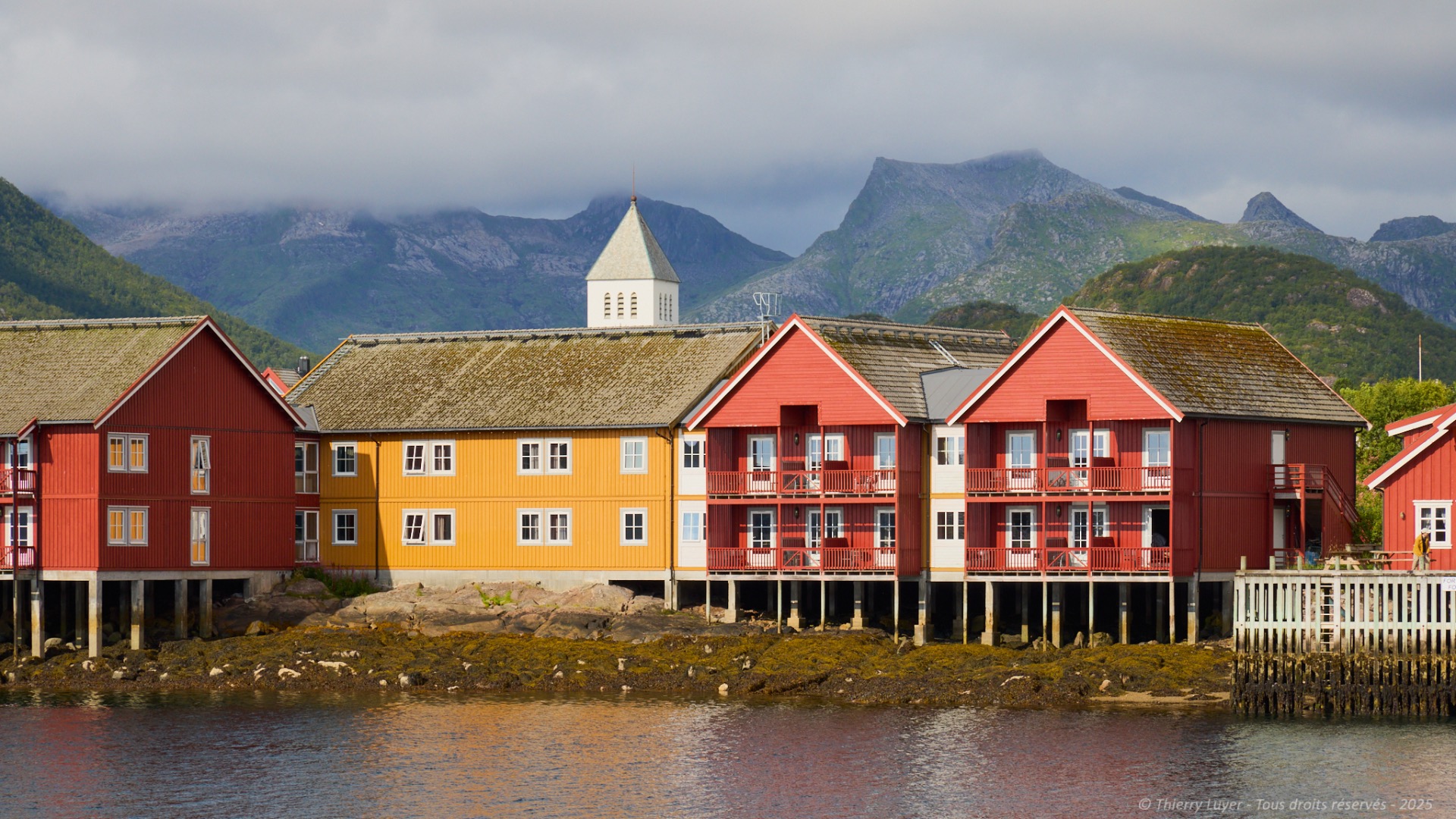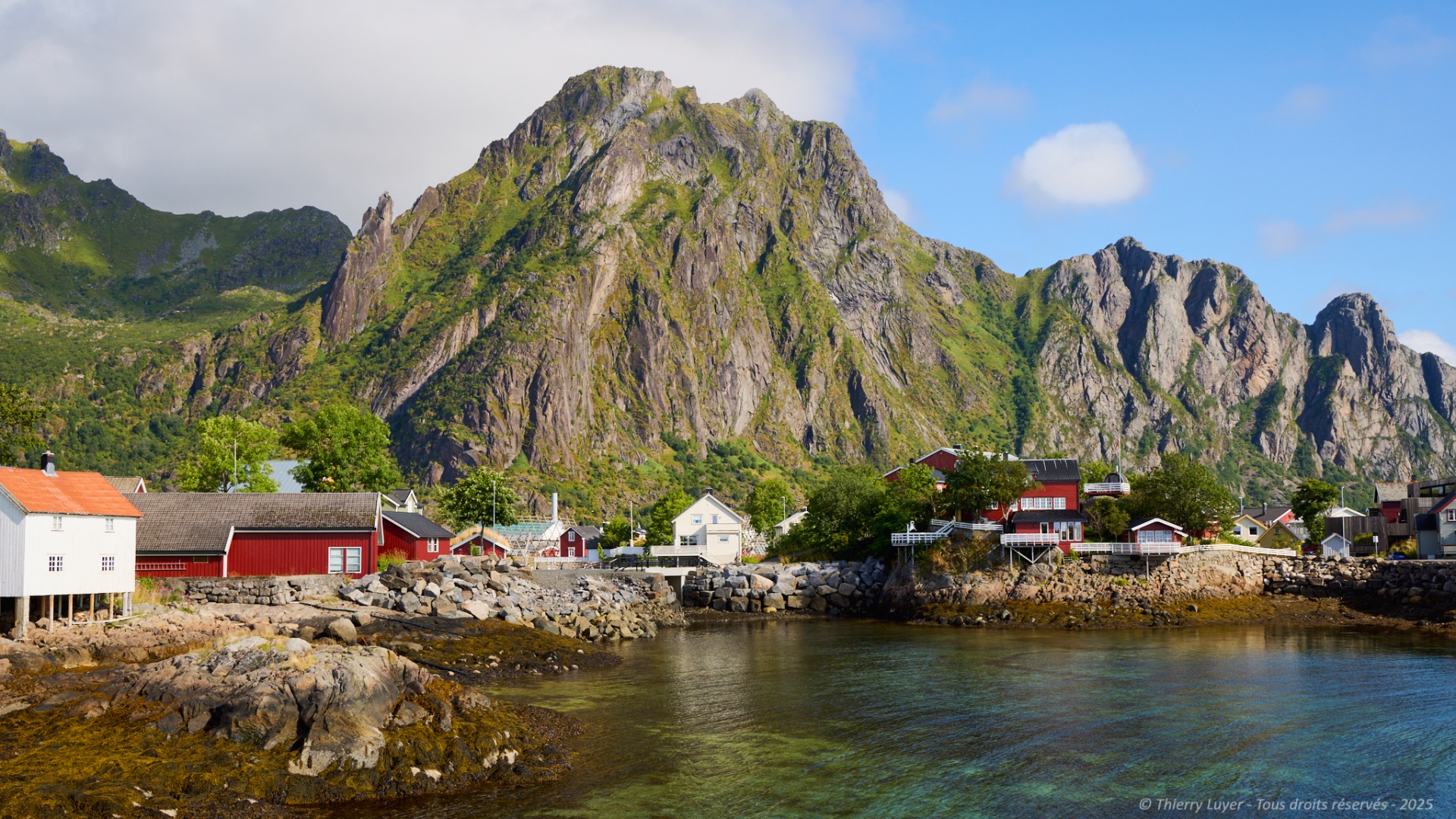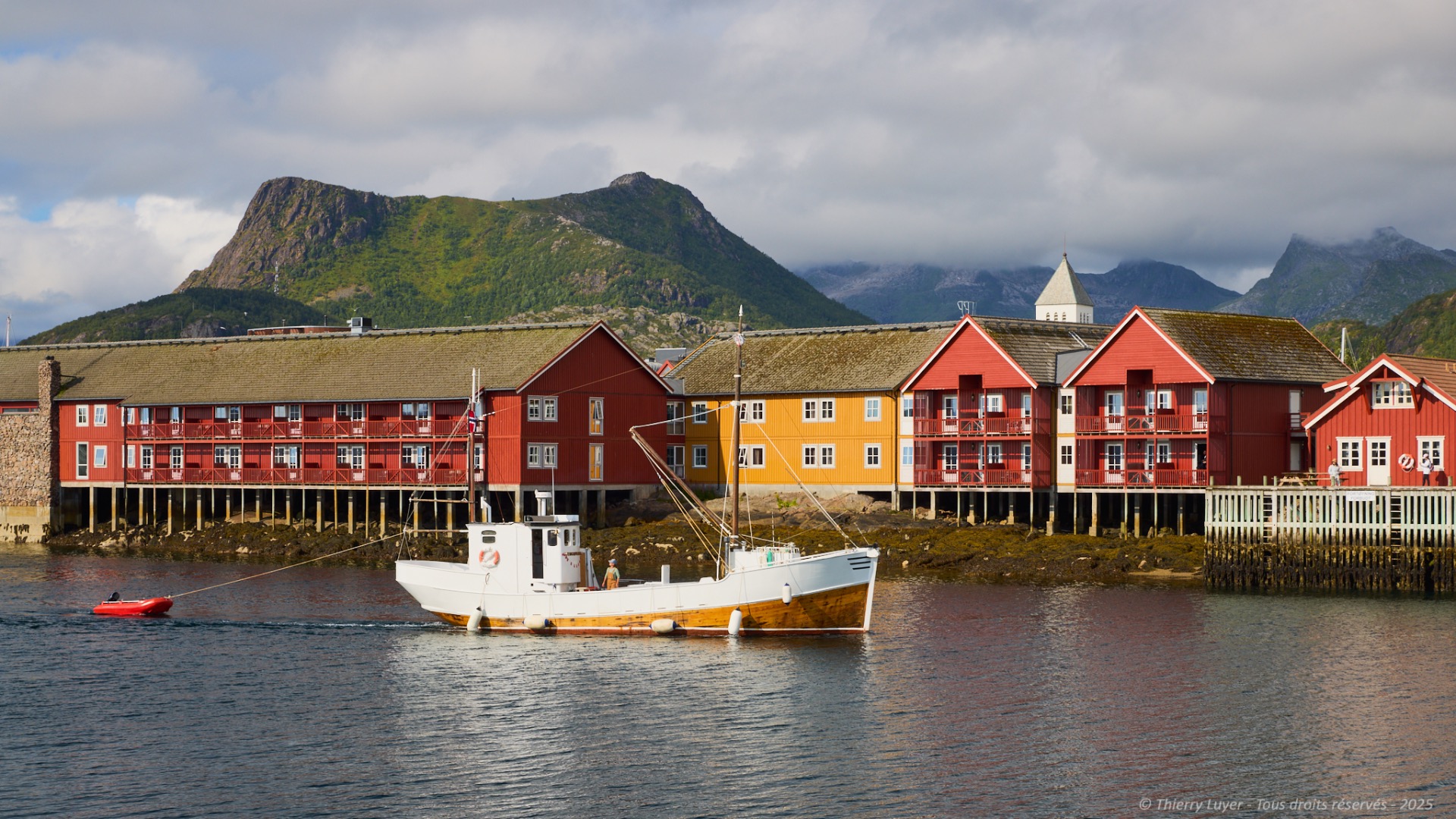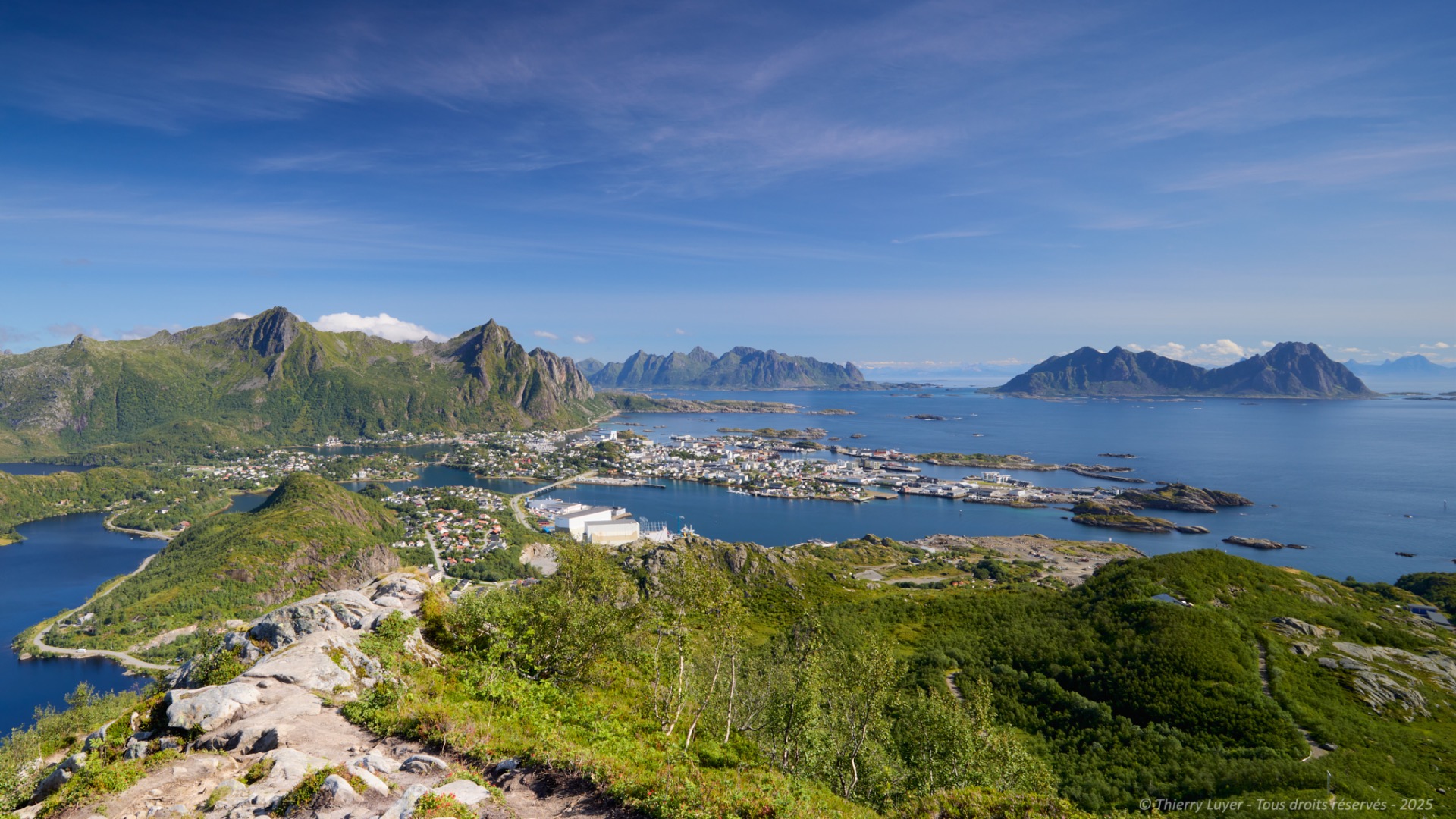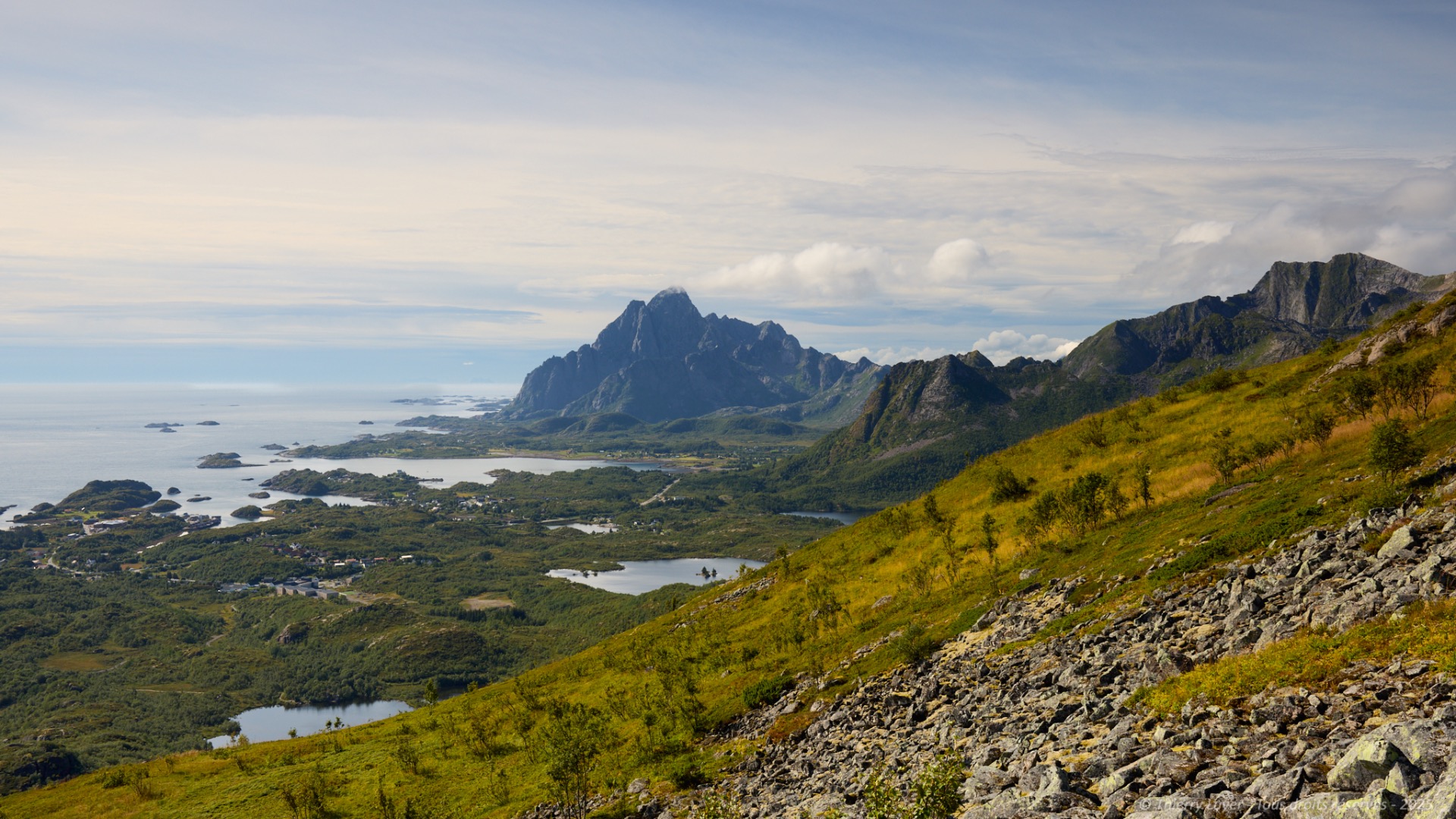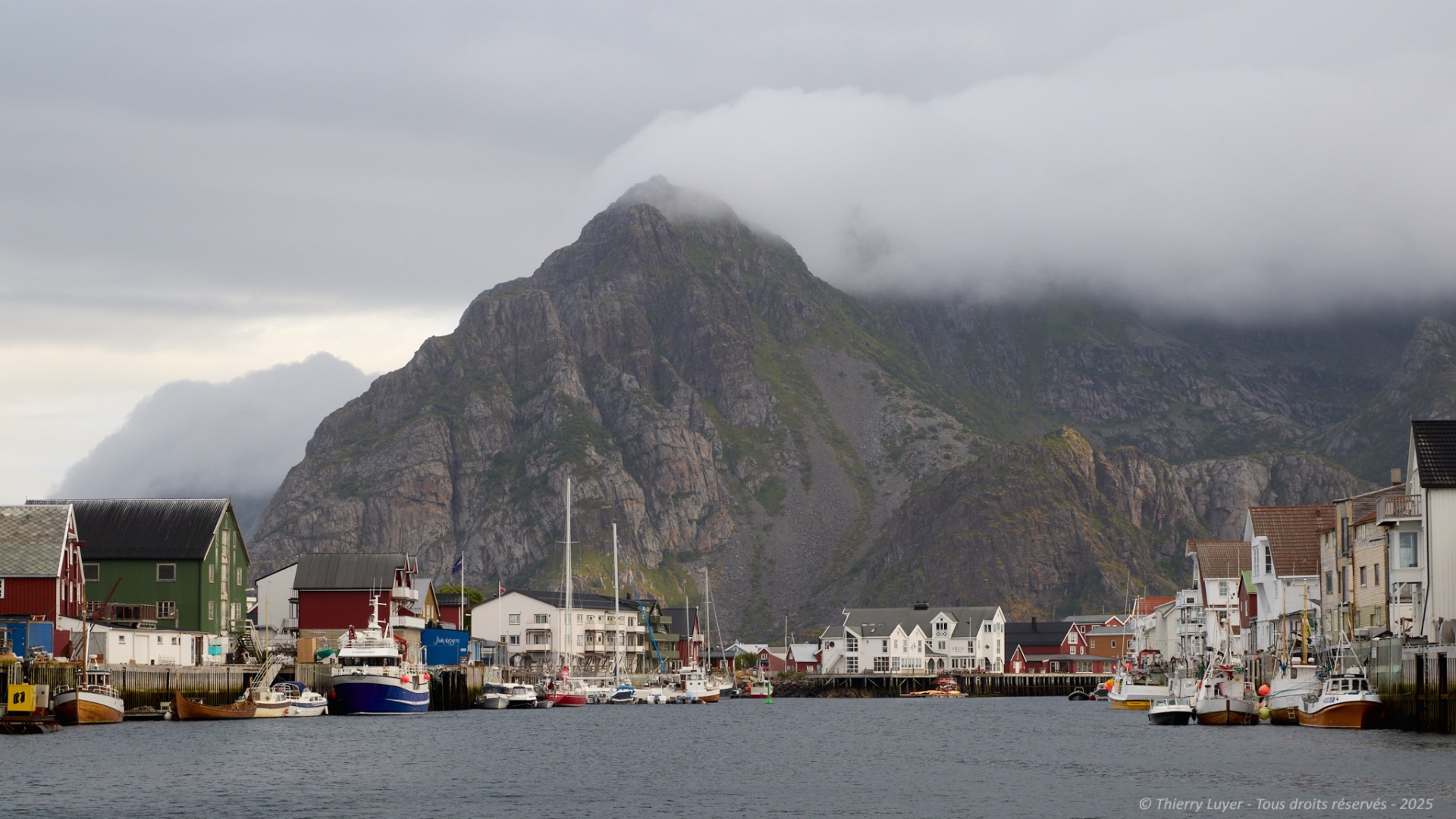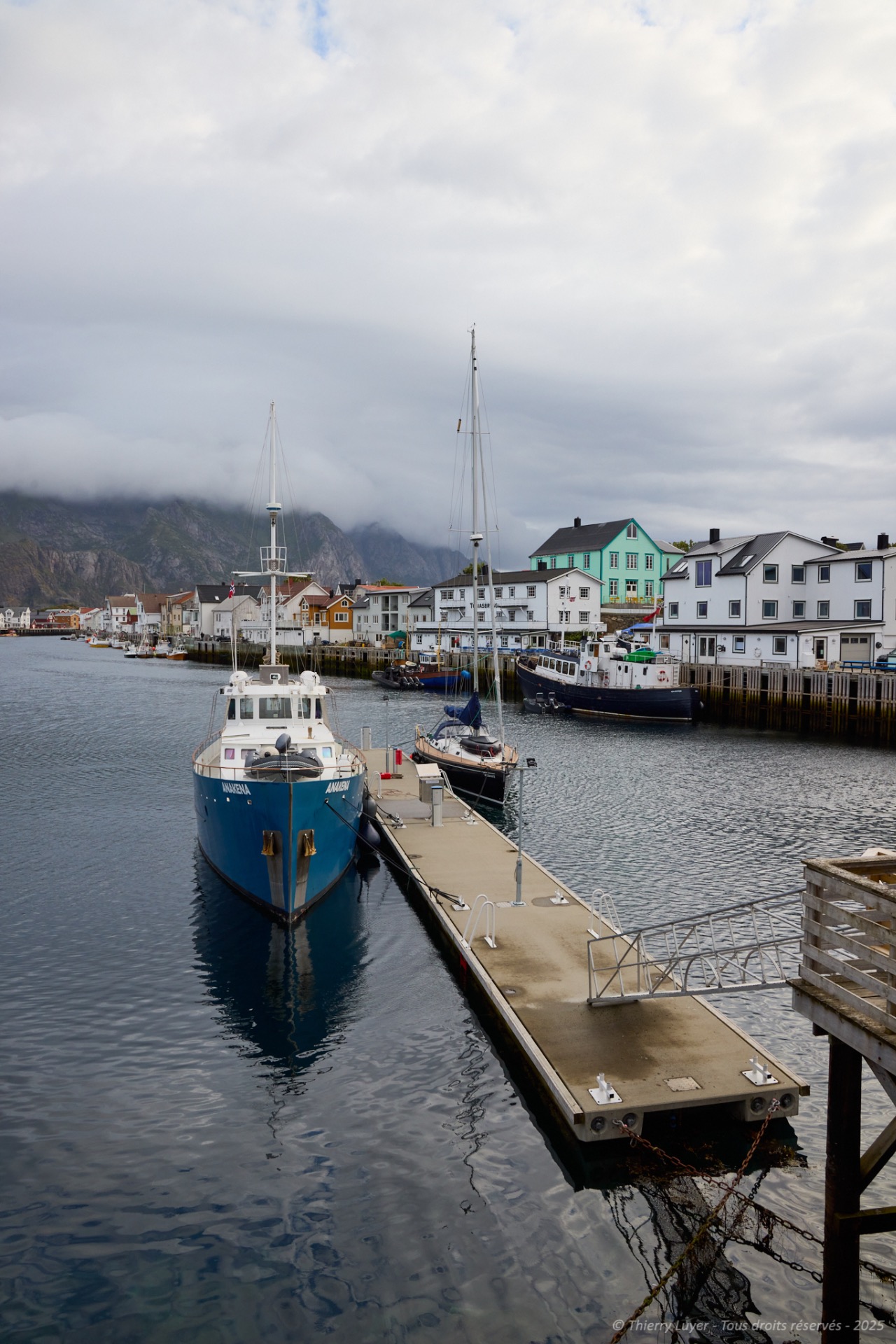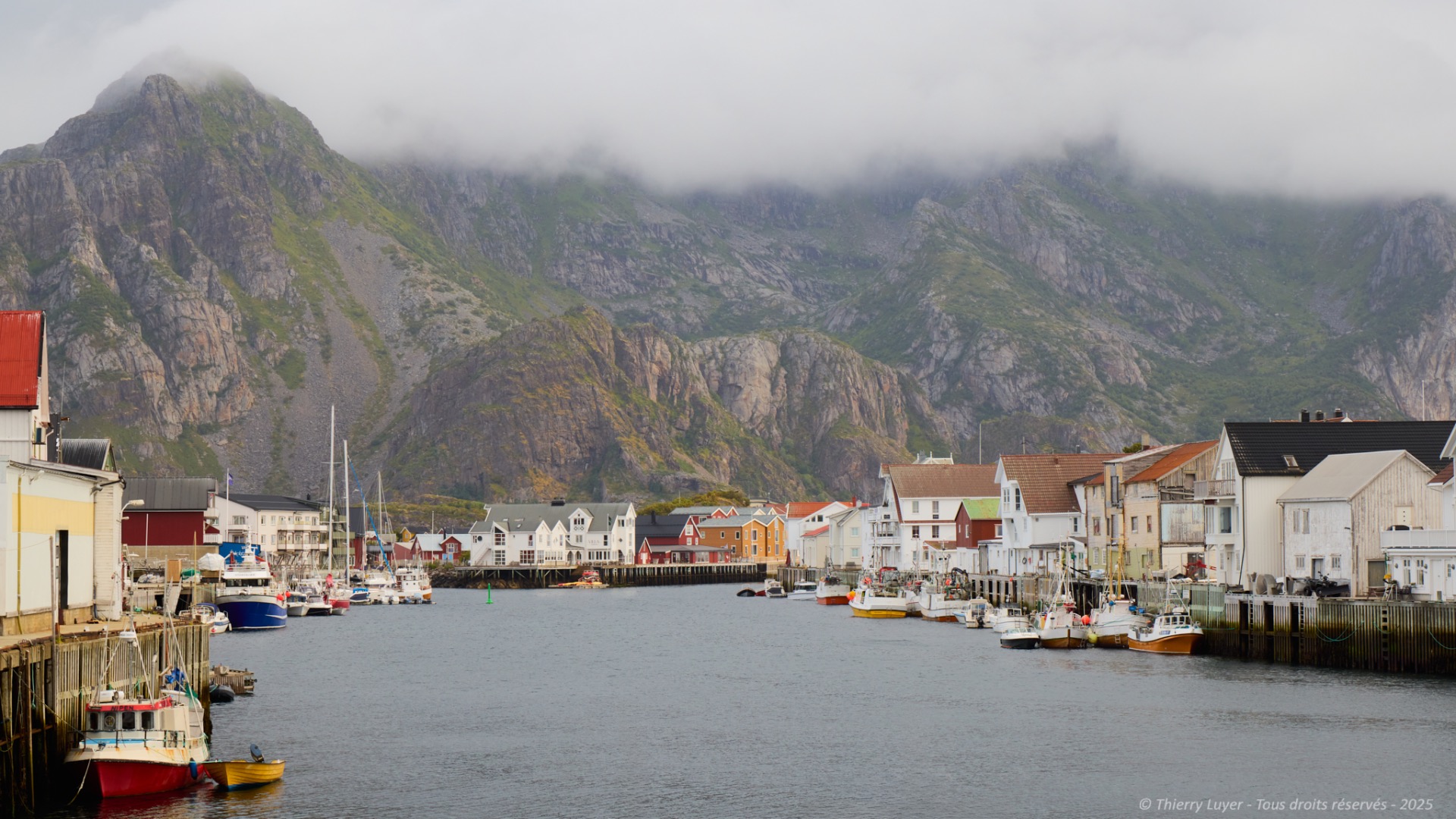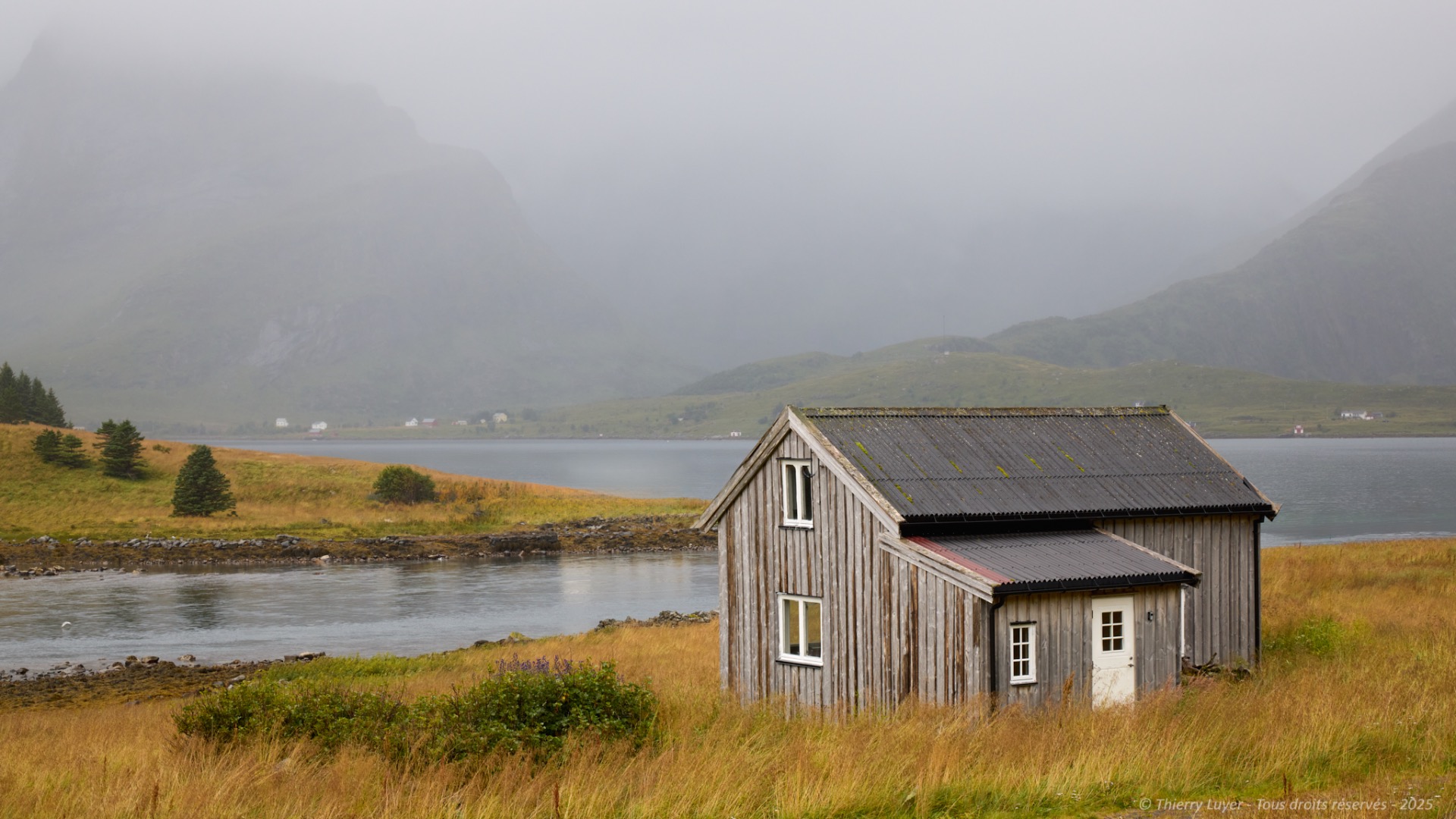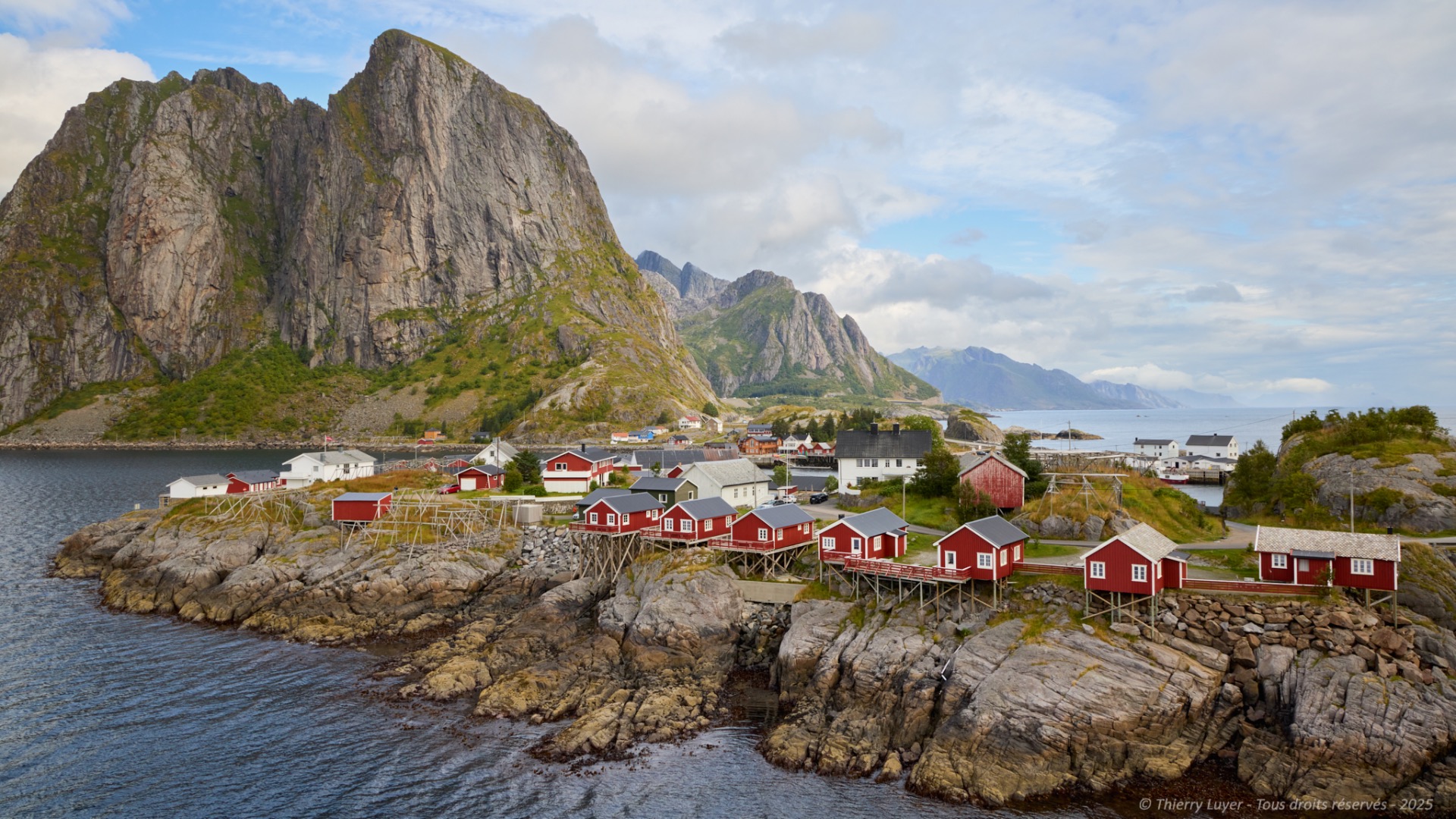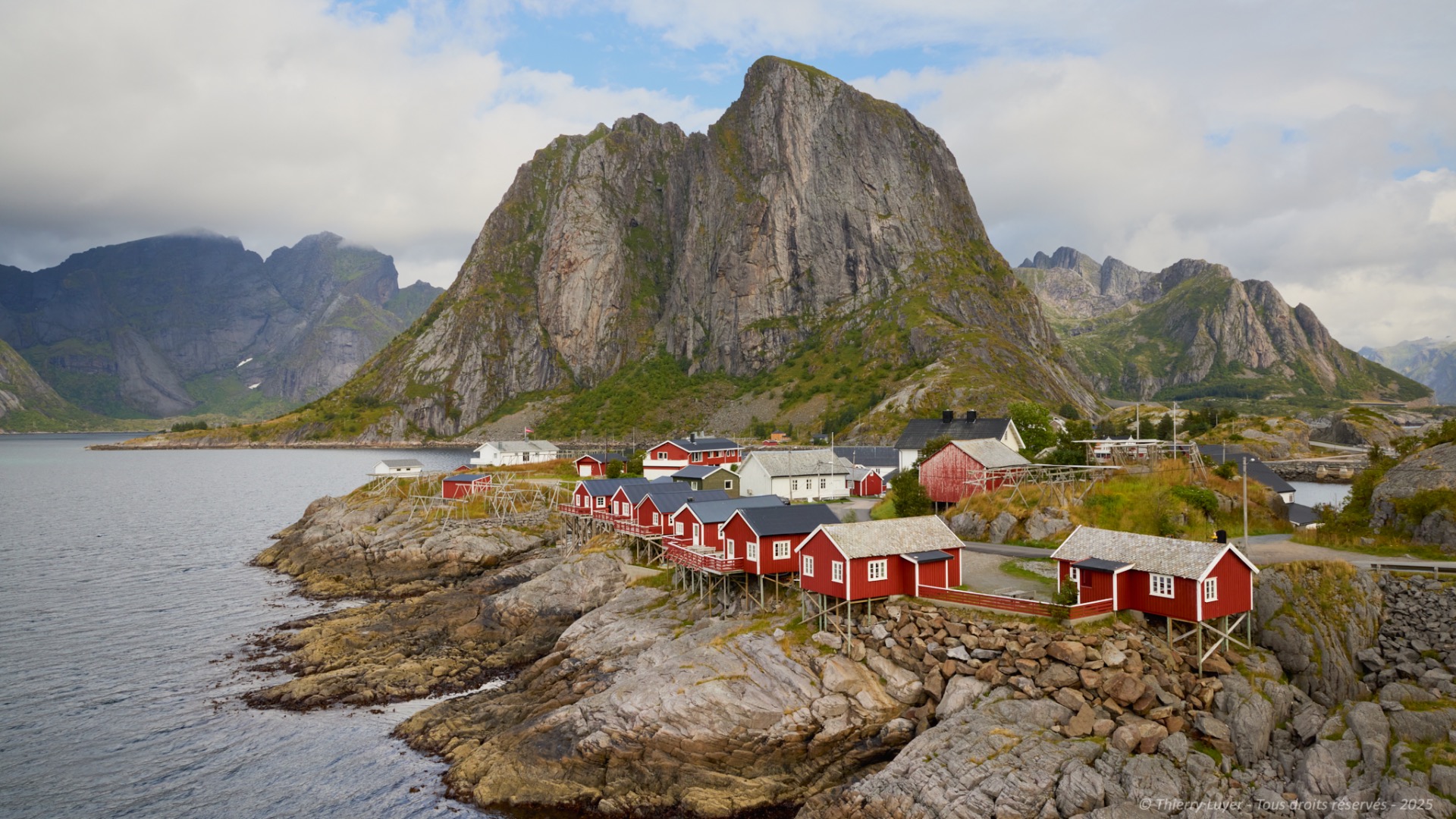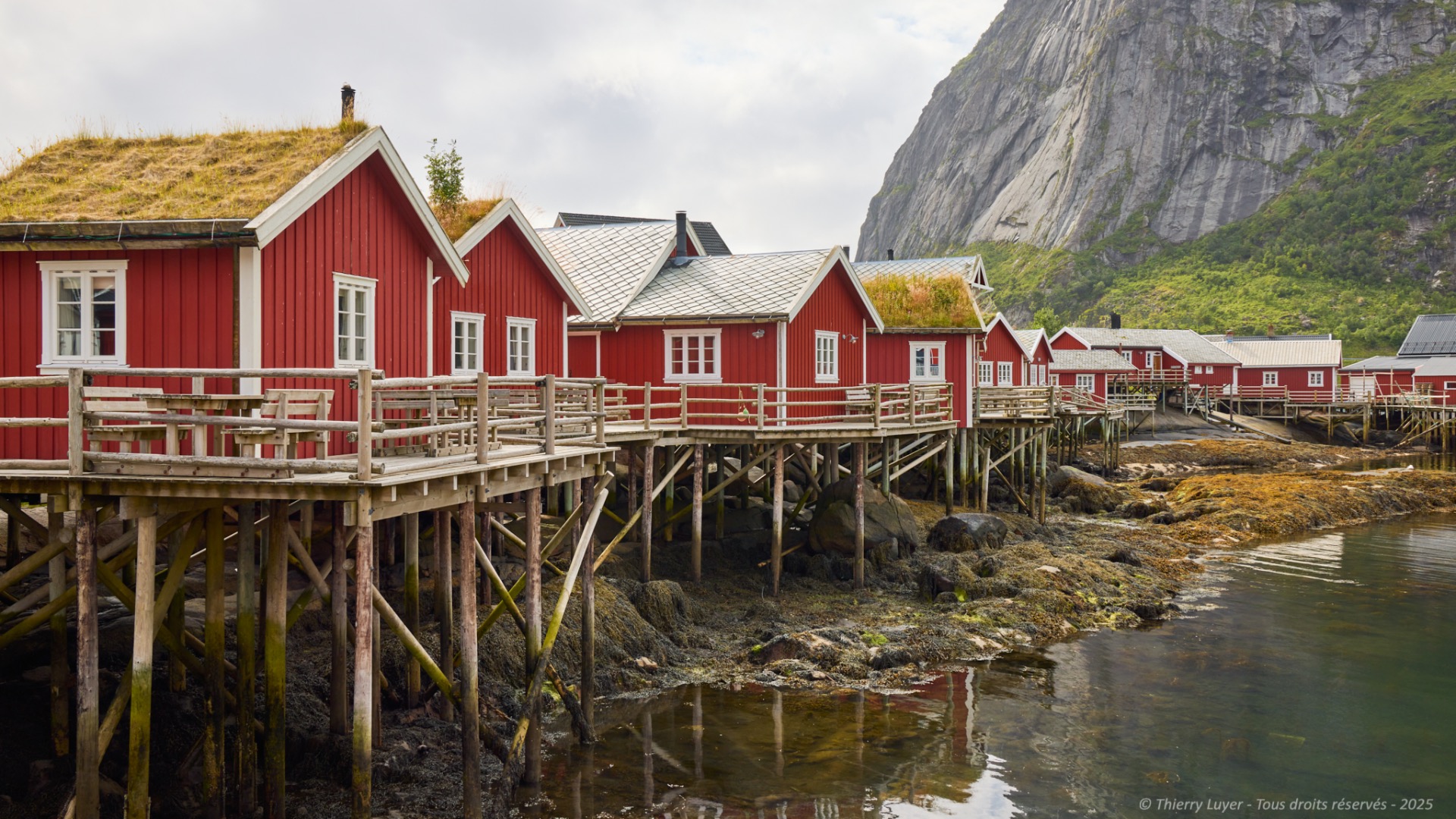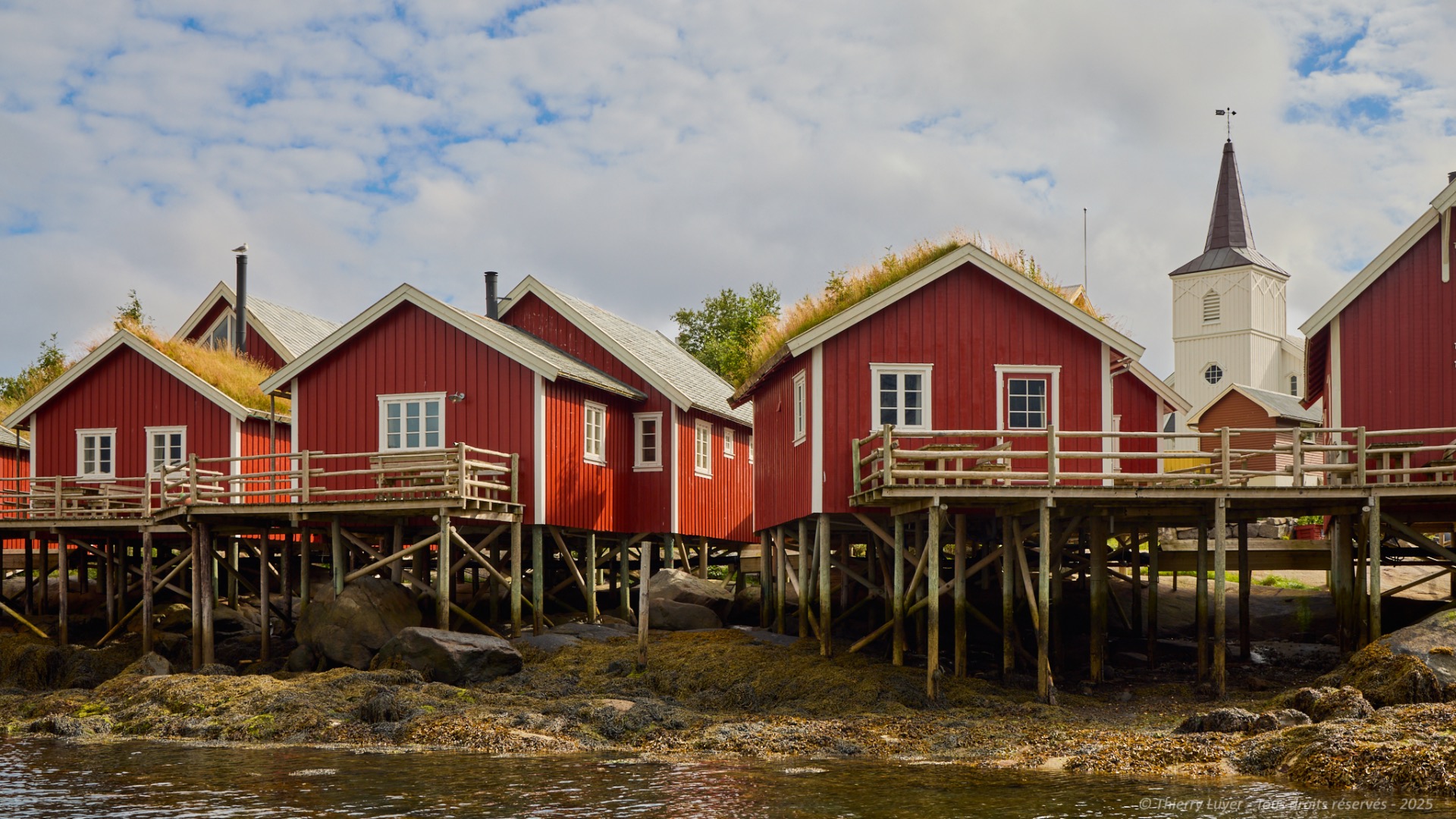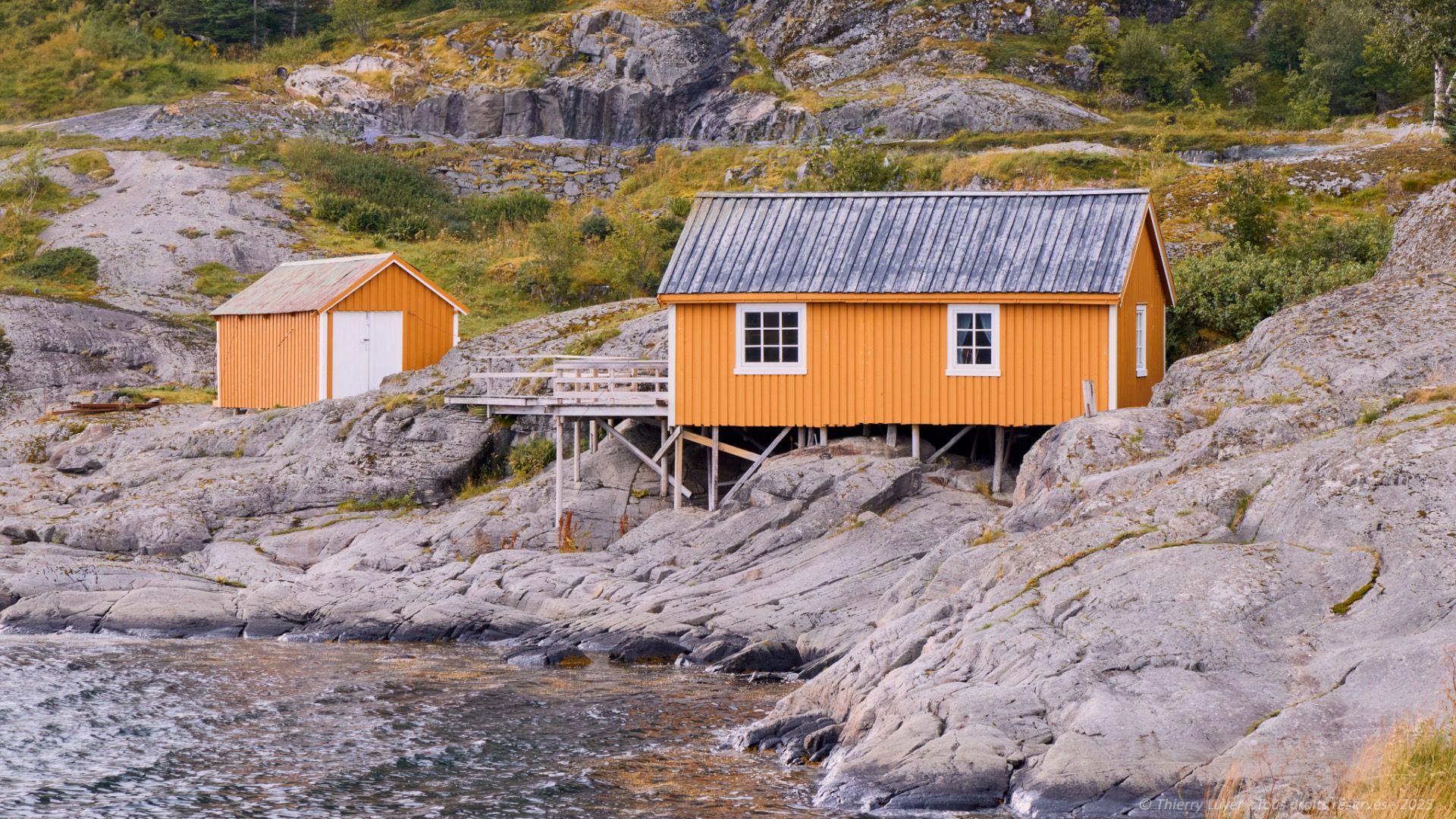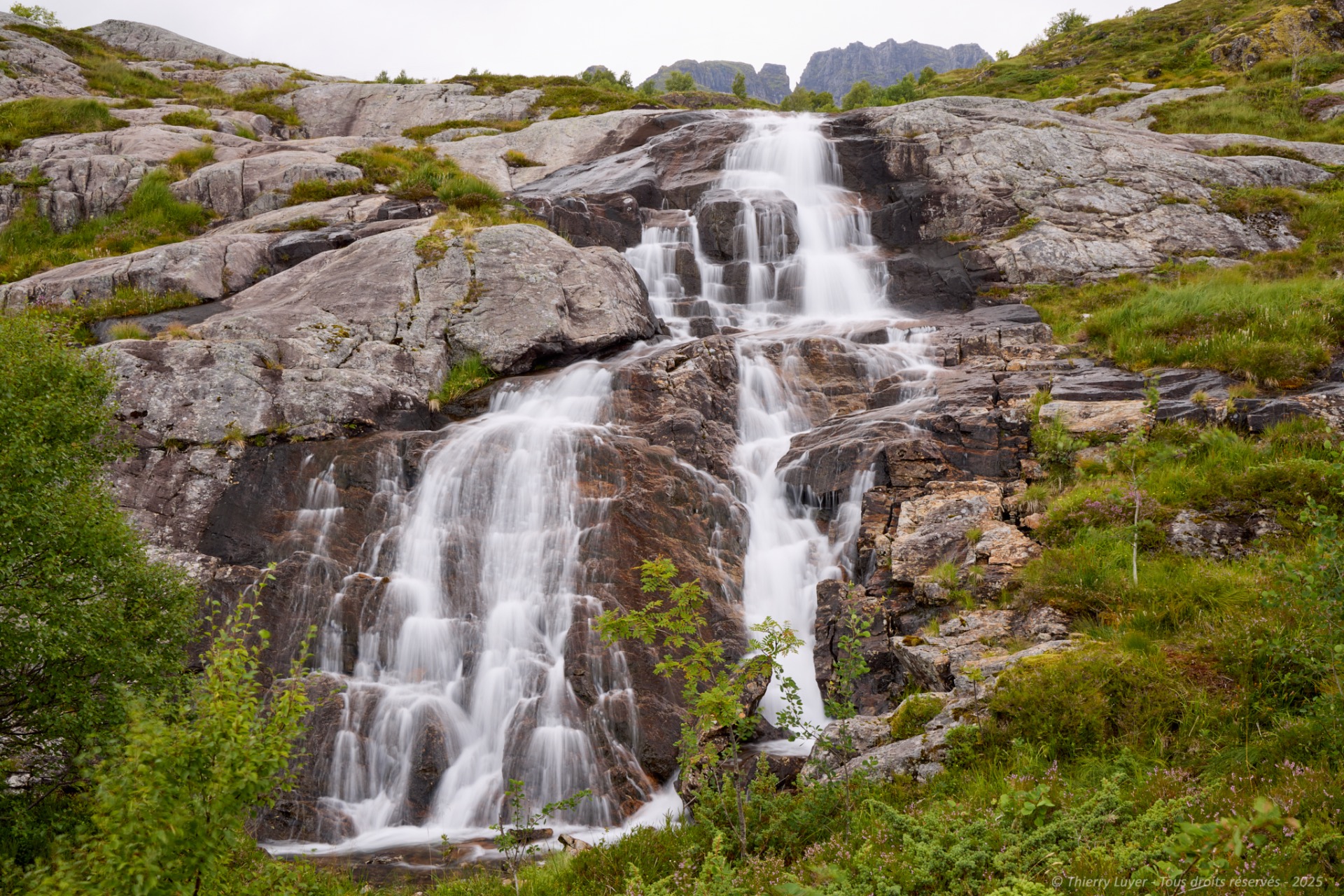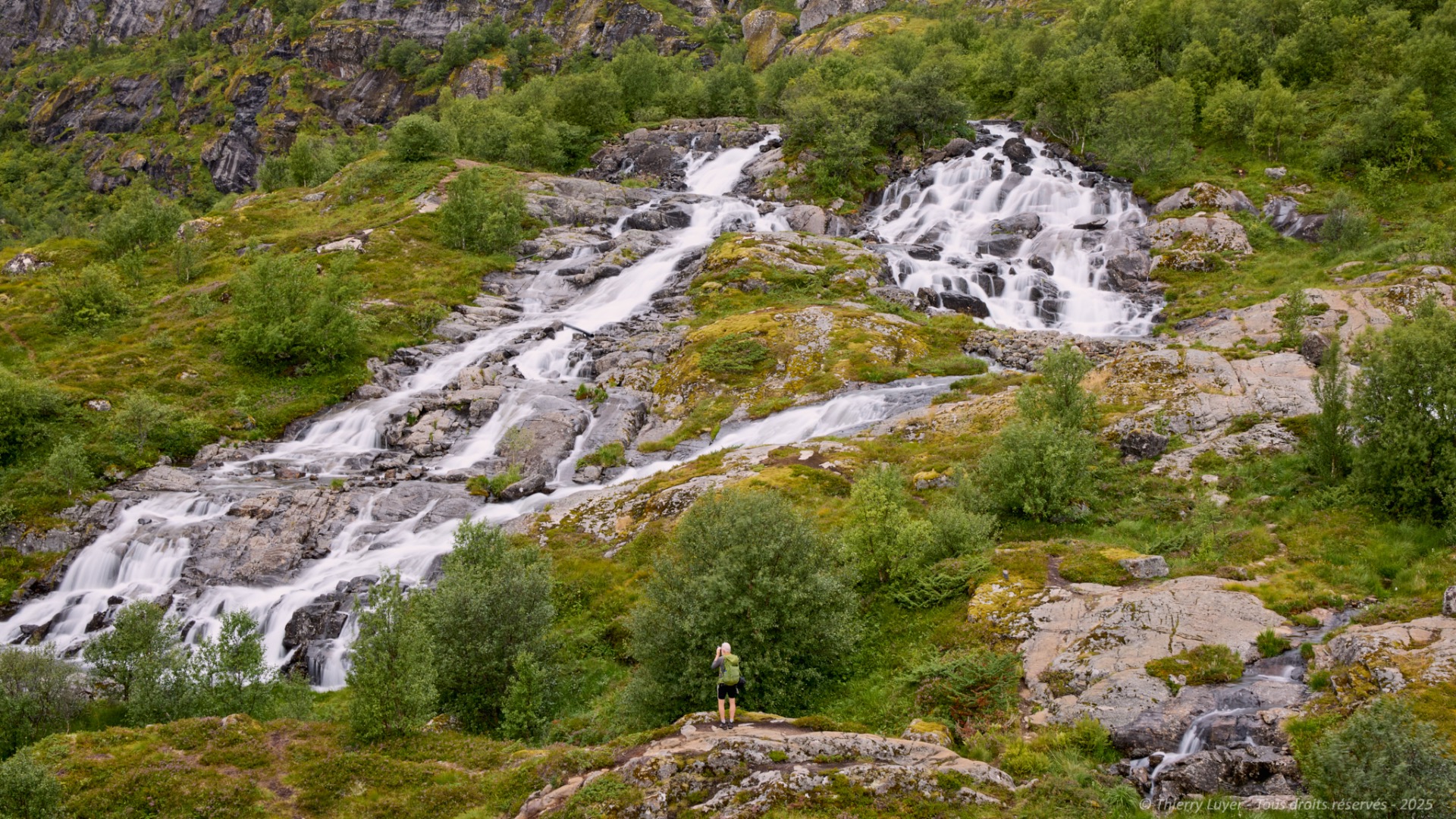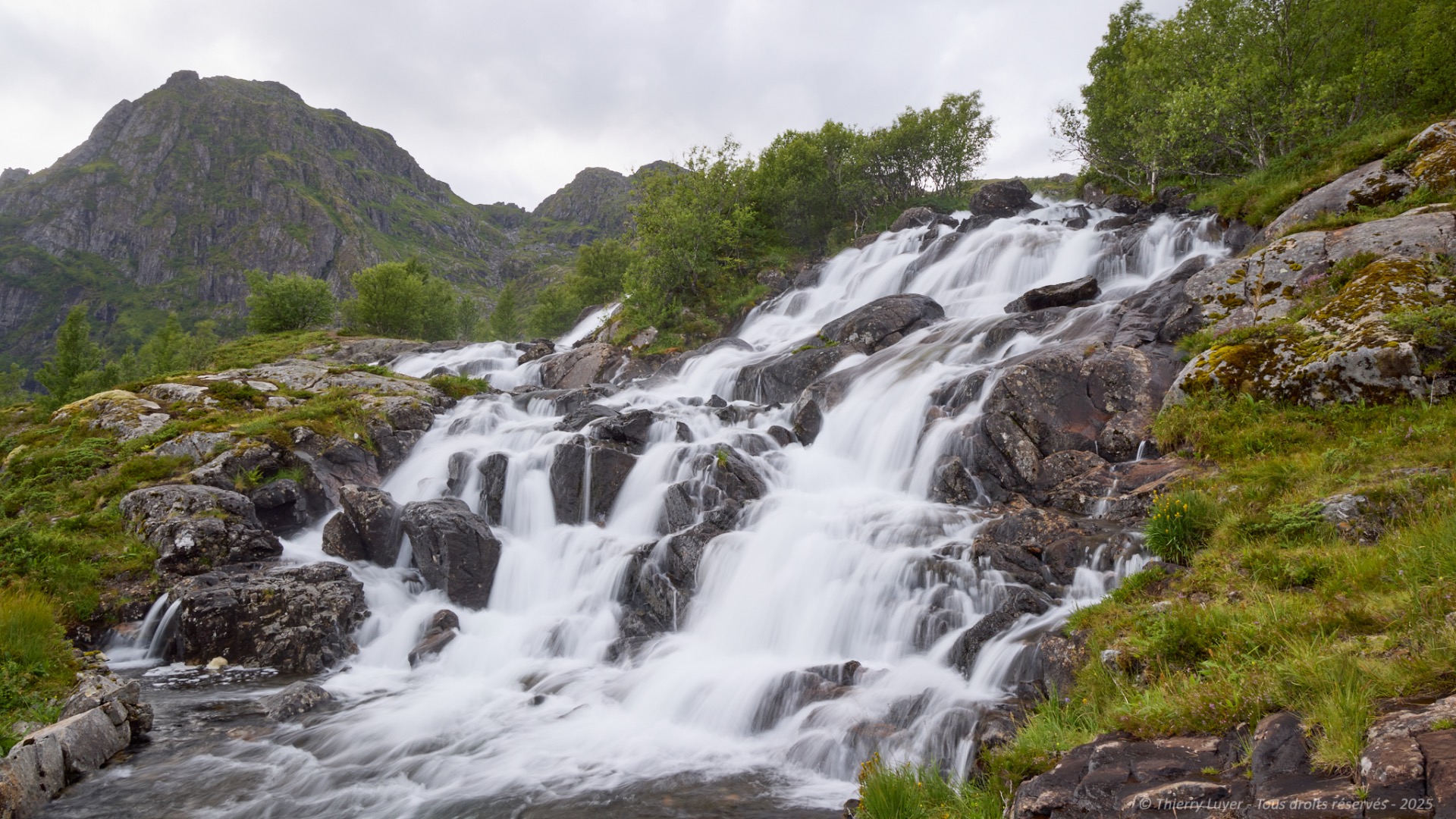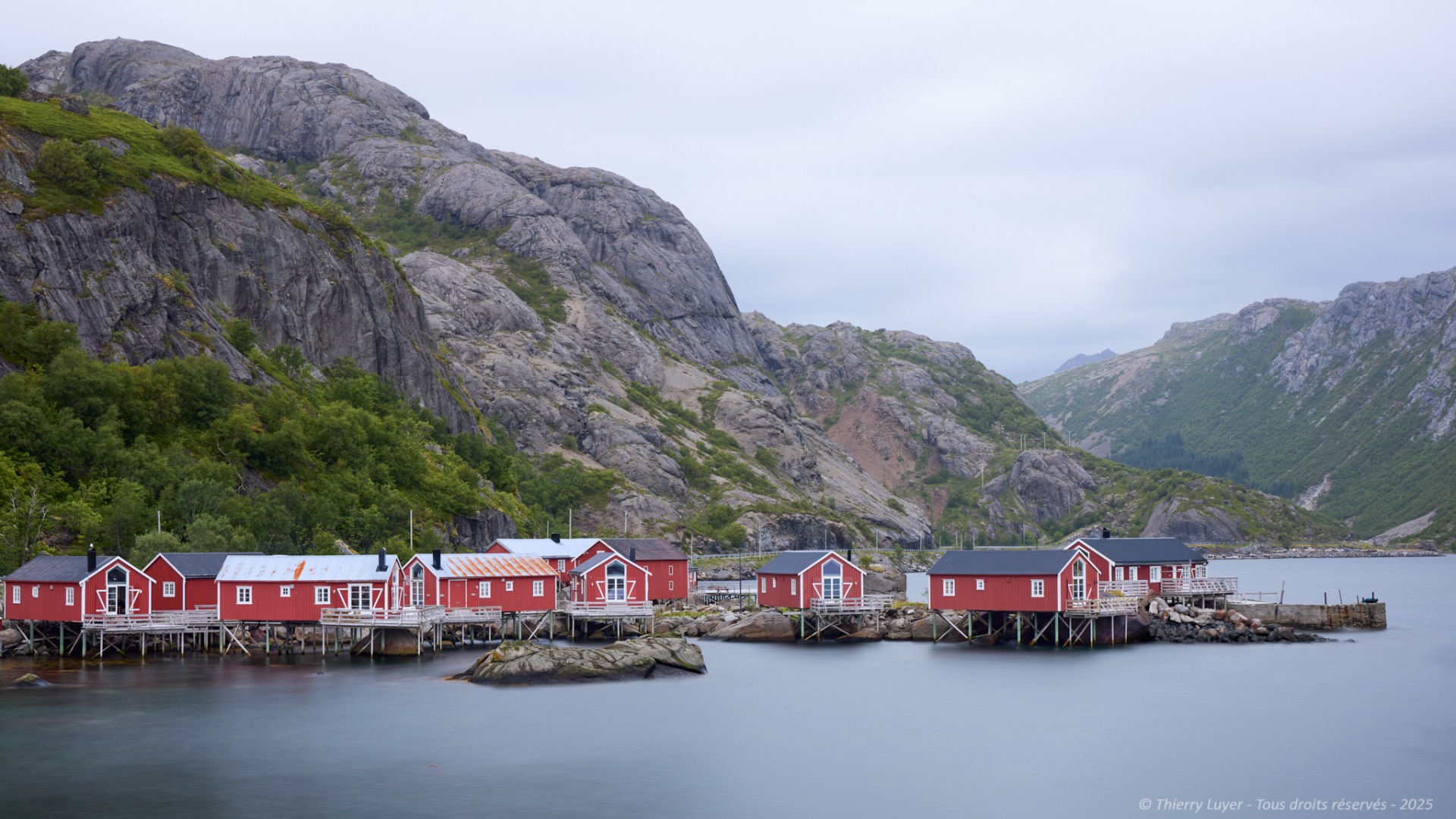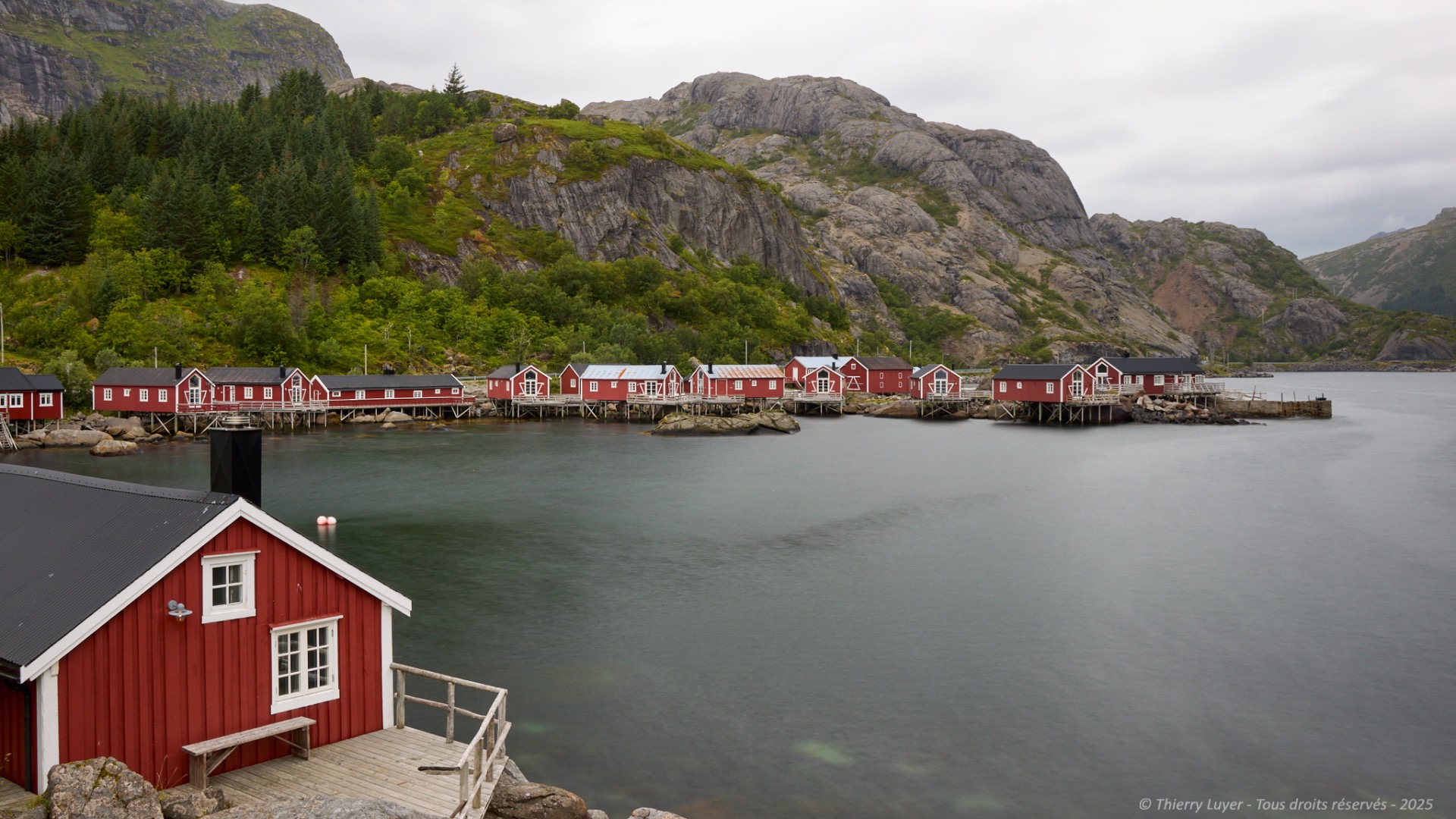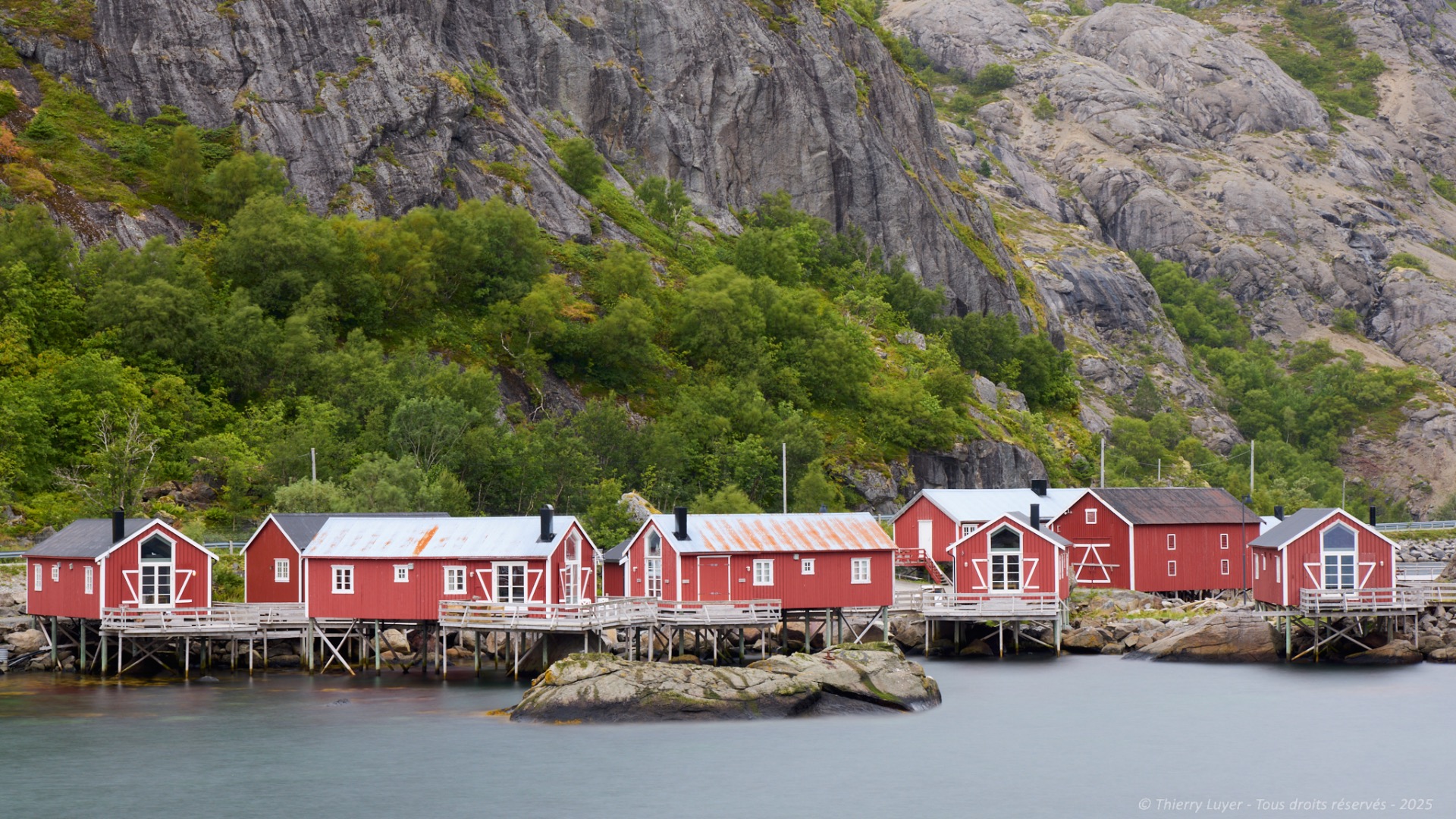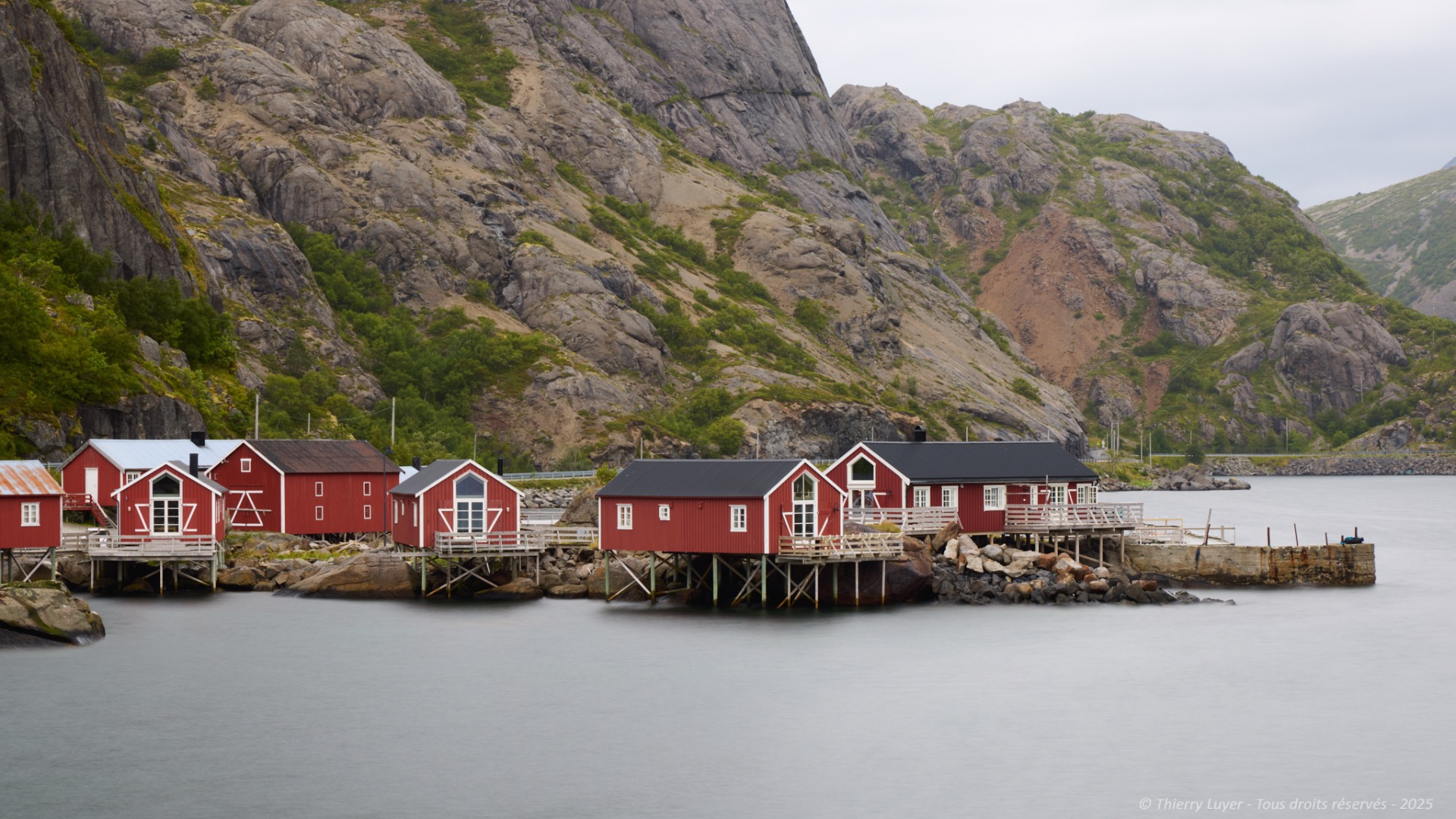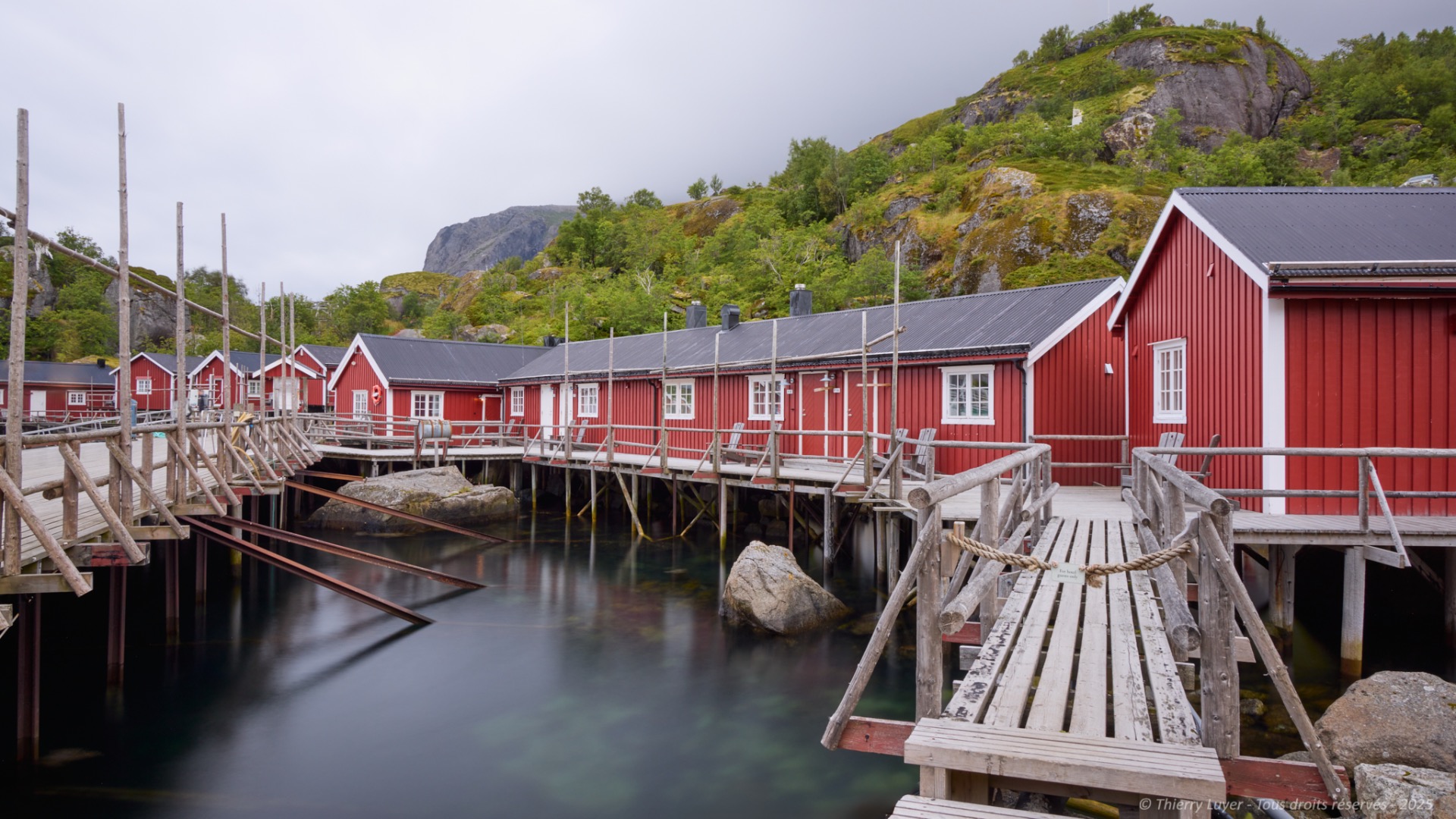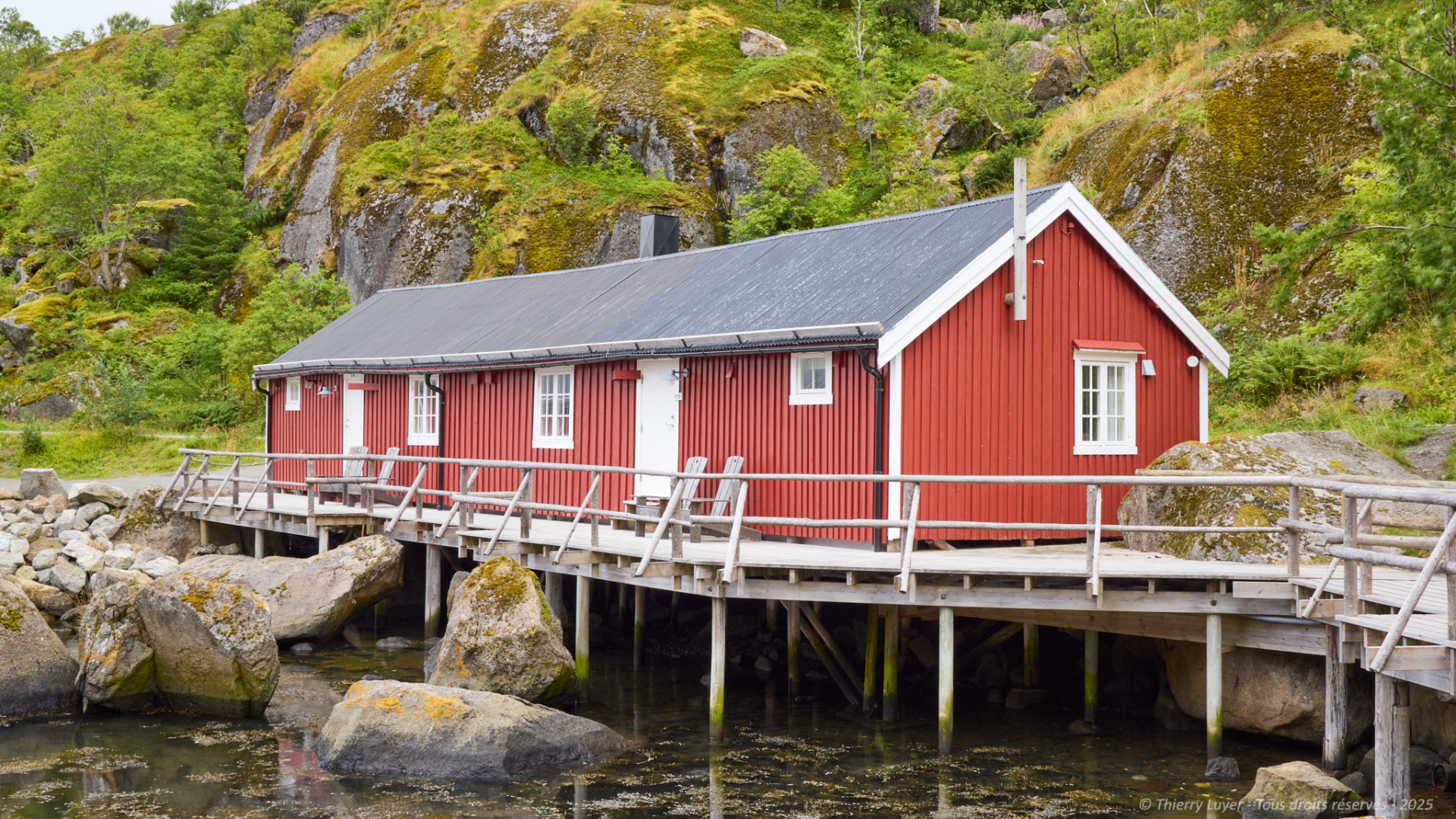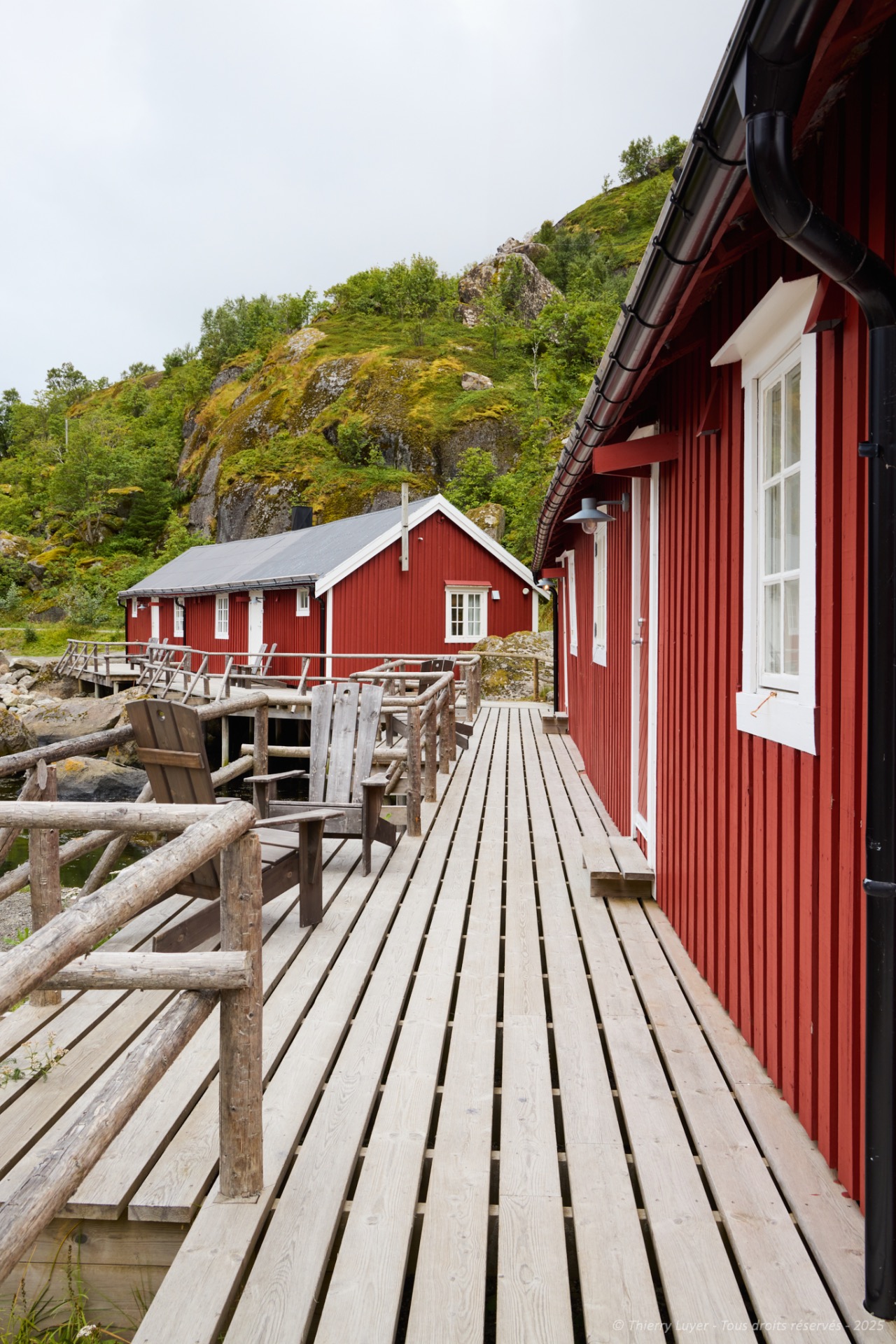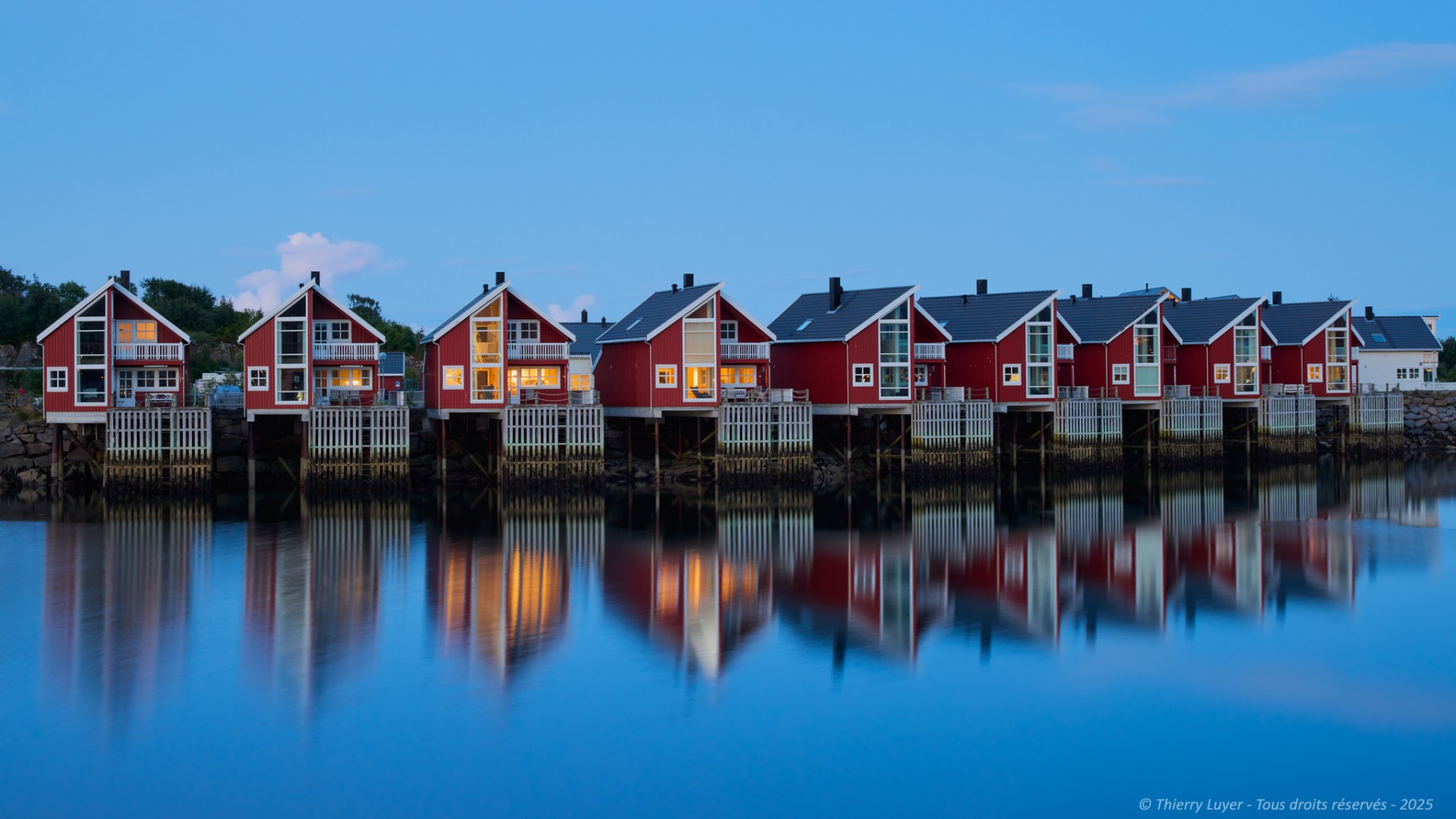
Norway's Lofoten Islands - Part 2
La Norvège des Lofoten
Day 7:
After three days at sea, I disembark in Svolvær, the largest town in the Lofoten Islands, late in the evening.
Although Svolvær is the largest town in the Lofoten Islands, its population is less than 5,000. The town's main sources of income are fishing and tourism.
As night falls, the light fades and the sky and sea merge into a dark blue.
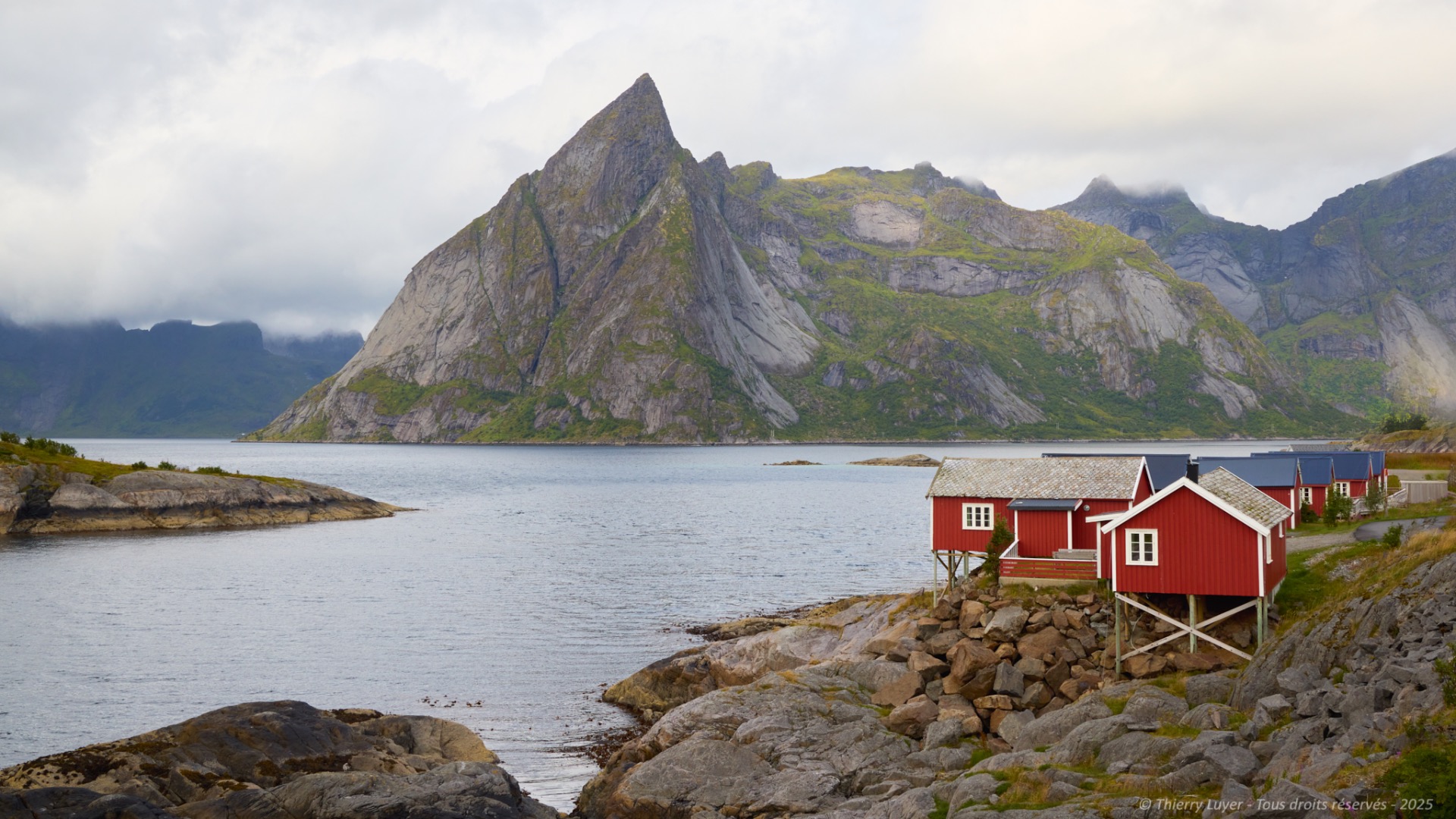
Day 8
The weather in Norway changes quickly... It was gray and rainy when I woke up, but the sky cleared up within half an hour.
I take advantage of the sunshine and go on a three-hour hike to the summit of Mount Tjeldbergtinden. A very steep trail and a 567-meter climb... but the superb view of the town of Svolvær is well worth the effort!
Then, I hit the road and spent the night in Henningsvær.
Day 9:
Henningsvær is a picturesque village in the Lofoten archipelago. It is also known as the "Little Venice of Lofoten" because of the many bridges that connect its islands. But this morning, the weather is not kind: low clouds, wind, and intermittent rain... It looks like it's going to be a wet day.
On my way to the Lofoten Islands, a gray house on the shore, where strong currents reverse with the tides, catches my attention despite the drizzle.
After driving for two hours, I arrived in Reine, a popular tourist destination in the Lofoten Islands
Reine and its rorbuer.
A rorbu (rorbuer in plural) is a traditional fisherman's hut. Usually red in color and sometimes with green roofs, these buildings are numerous in the Lofoten archipelago, where fishing is a major activity, as evidenced by the many fish drying racks.
Fishermen used the huts to store their equipment, and they could also be used as living quarters. As tourism has increased, many of these huts have been converted into comfortable accommodations.
In Norway, the tradition of covering roofs with grass dates back several centuries. Used for its insulating properties, this technique helps maintain a comfortable temperature inside homes, even during harsh winters, while blending harmoniously with the surrounding nature. Green roofs also promote biodiversity by providing a habitat for insects and birds. They also help manage stormwater by absorbing some precipitation.
Continuing along the road to the tip of Lofoten, a hiking trail leads to the Sørvågen waterfalls, which are abundant at this time of year.
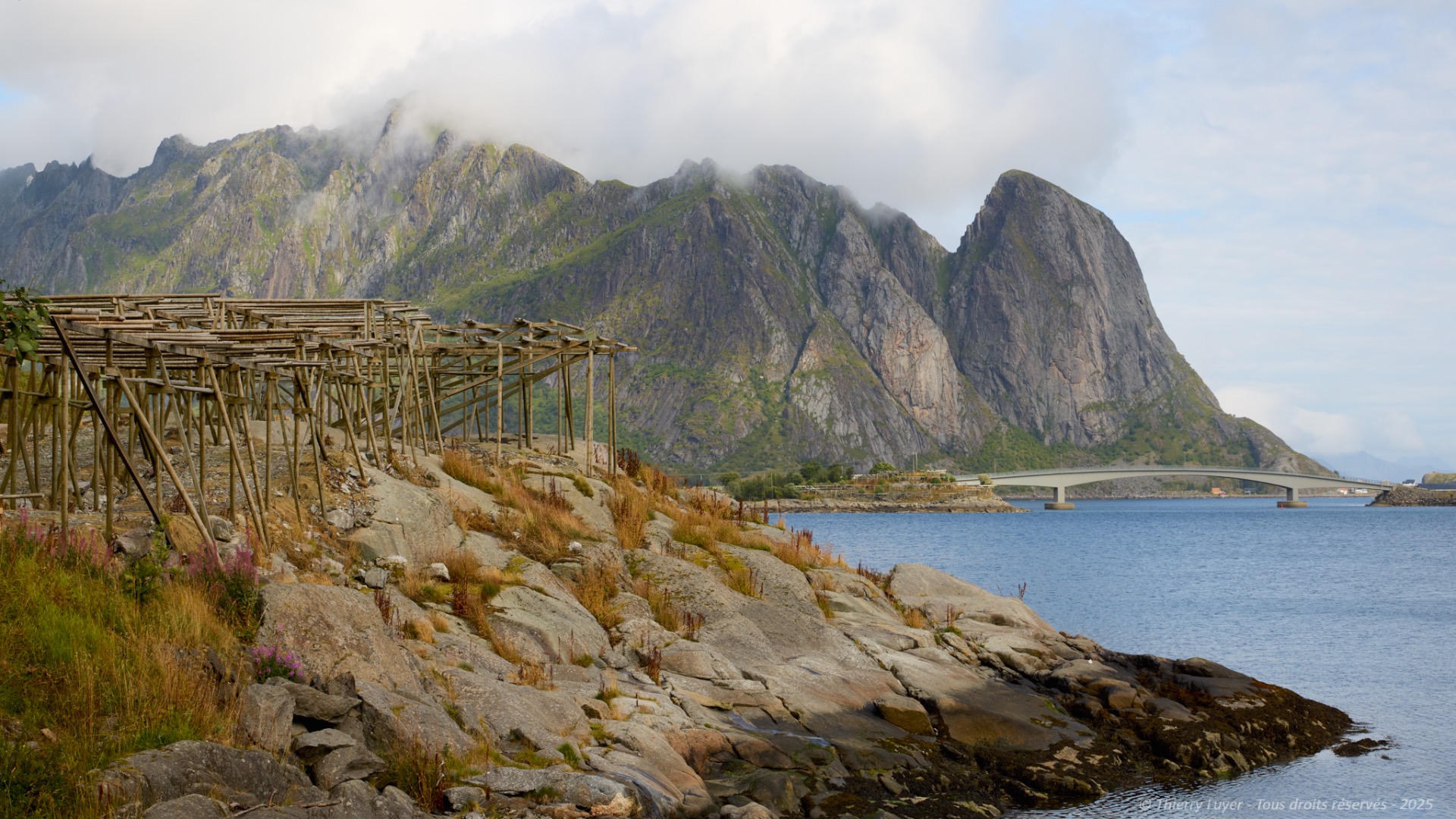
On the way back to Henningsvær, I stop at Nusfjord, a well-preserved fishing village listed as a UNESCO World Heritage Site. With its red cabins, traditional boats, and spectacular fjords, Nusfjord appears to be frozen in time.
